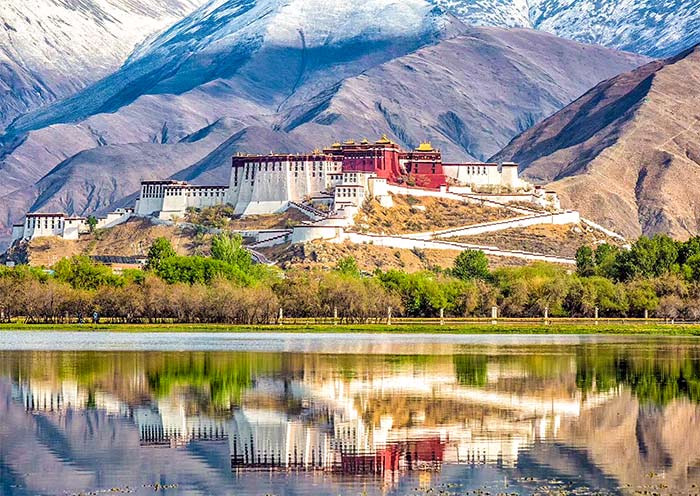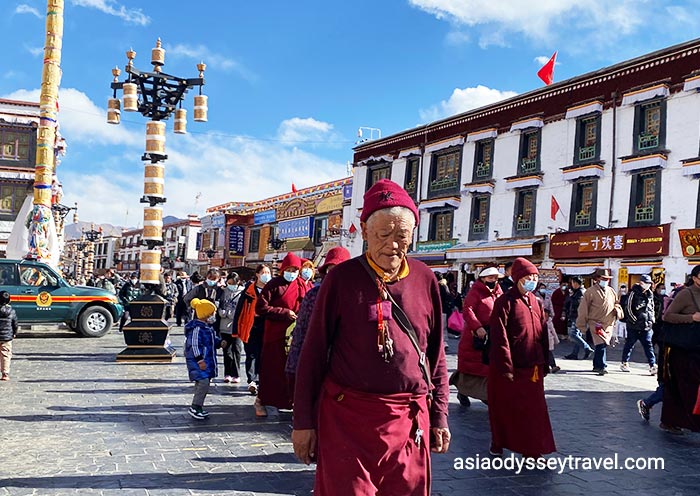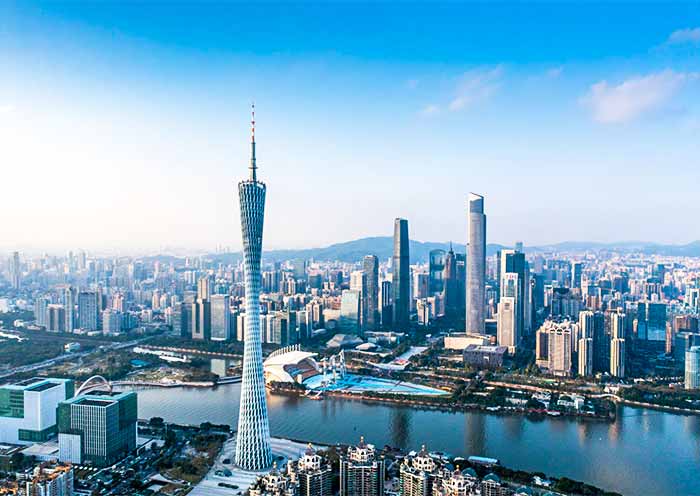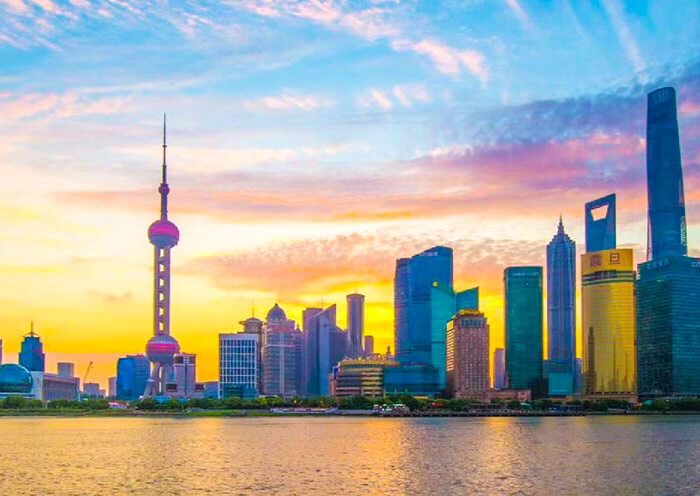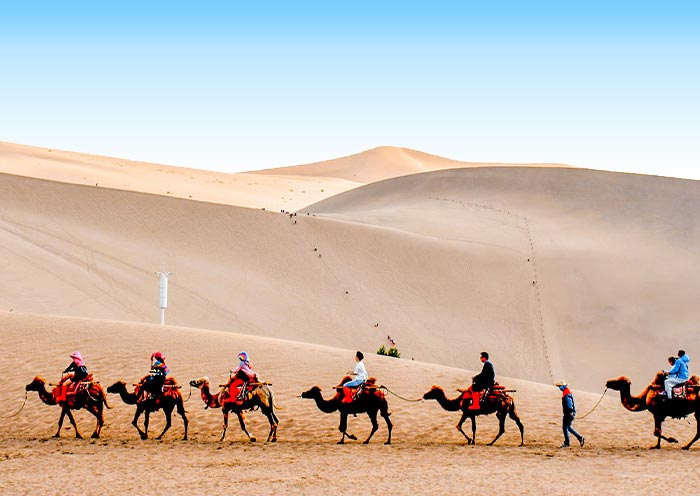21 Days China Tour from Chengdu: Pandas, Tibet, Avatar Mountains, China's Icons
- Highlights
- Itinerary
- Price
- Trip Notes
- Accommodation
- Photos
- Reviews
3-Week China’s Highlights from Chengdu to Beijing via the Tibetan Roof
Our China Tour from Chengdu is crafted for travelers who dream of seeing all of China’s classics and experiencing its Super Landmarks in one trip within just three weeks.
In 21 unforgettable days, your footsteps will span Southwest China, the Himalayan highlands, surreal natural landscapes, and two grand ancient capitals, covering China’s most diverse and iconic landscapes and cultural treasures.
Start in Chengdu - meet the adorable giant pandas, taste spicy Sichuan cuisine, and soak up the city’s relaxed lifestyle. Fly to Lhasa & Mount Everest Base Camp – stand on the Roof of the World, admire holy monasteries, turquoise lakes, and snow-capped peaks, and feel the spiritual pulse of Tibet.
From the high-altitude serenity, you descend to the otherworldly landscapes of Zhangjiajie, where you'll witness the legendary "Avatar Mountains" (Yuanjiajie) and challenge yourself on the death-defying Glass Bridge and Tianmen Mountain.
Continue to Xi’an – walk among the Terracotta Warriors, ancient city walls, and relics of China’s first empire. End in Beijing - climb the Great Wall, uncover the Forbidden City, and experience the timeless grandeur of China’s capital.
Designed by Asia Odyssey Travel’s 100% China-based team, with local guides who bring every destination to life through authentic stories and insider knowledge.
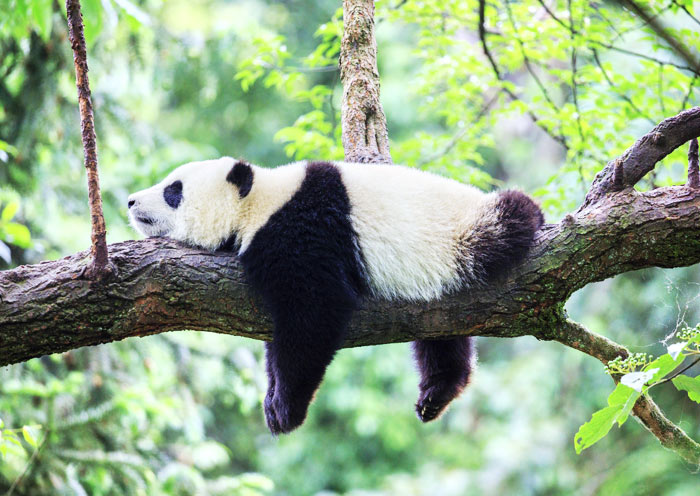
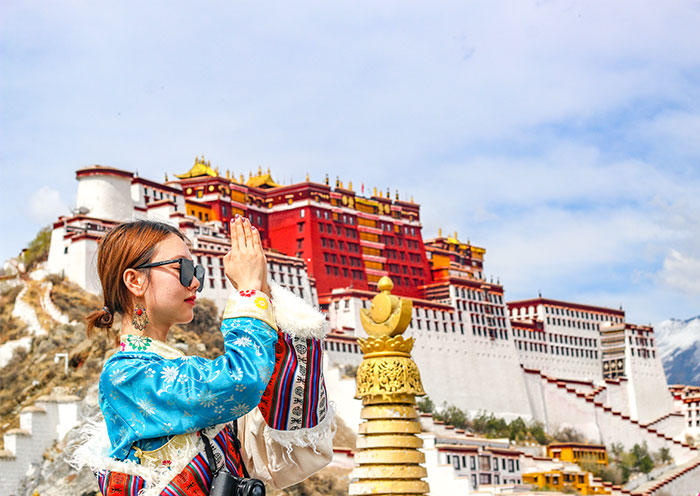
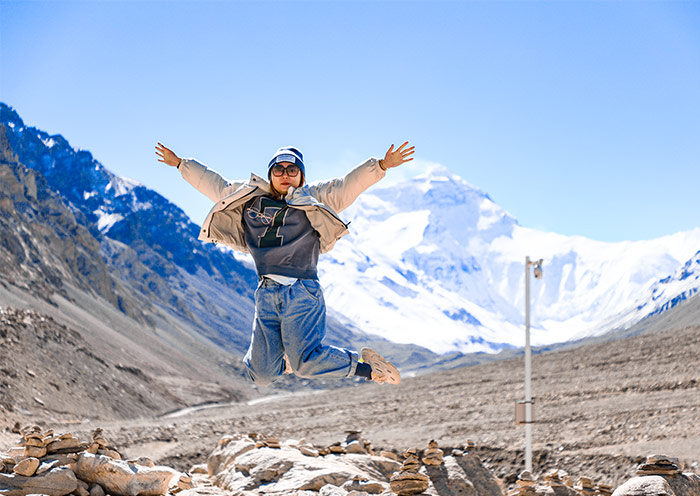
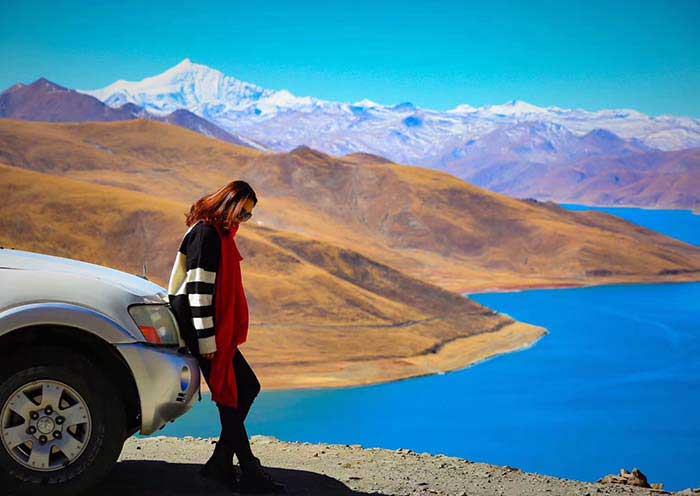
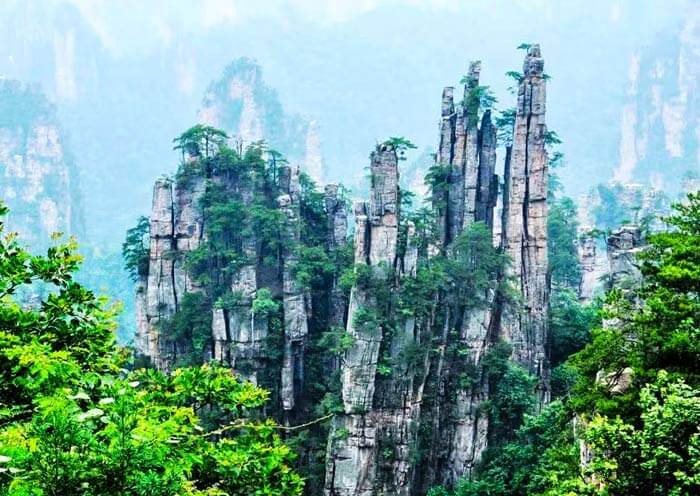
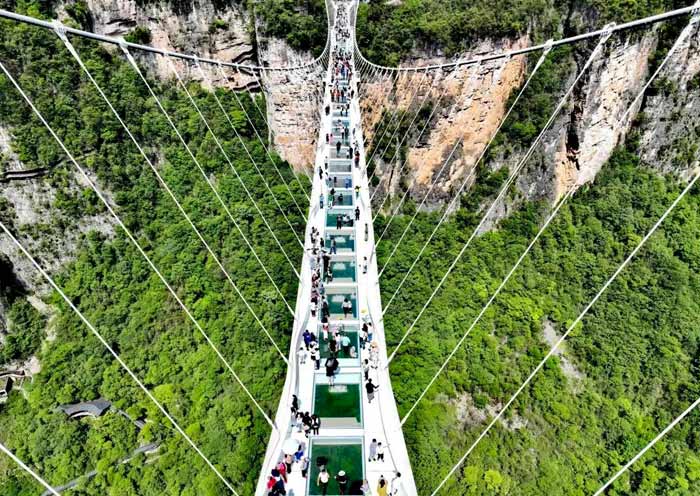
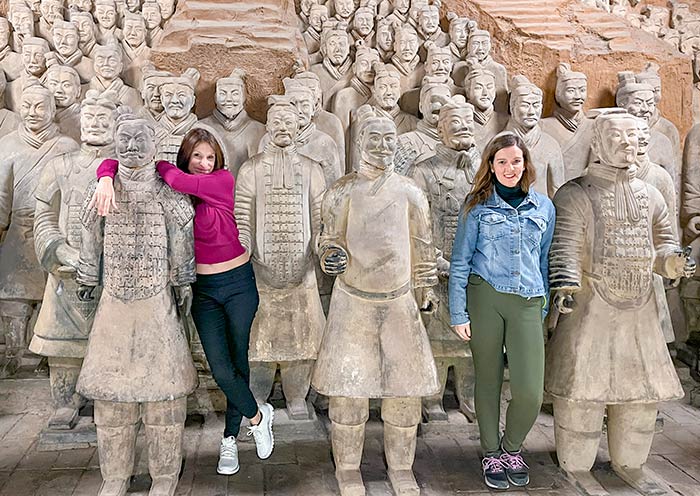
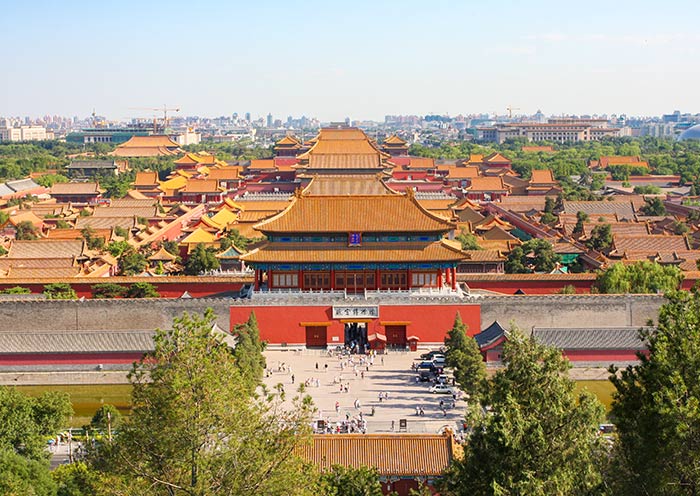
Itinerary at a Glance
Chengdu (3 Days)
Chengdu Panda Base, Wenshu Monastery, Renmin Park, Jinli Old Street, Leshan Giant Buddha
Lhasa (4 Days)
Lhasa Traditional Handicraft Art Center, Sera Monastery, Potala Palace, Jokhang Temple, Barkhor Street
Shannan & Gyantse & Shigatse (2 Days)
Yamdrok Lake, Karola Glacier, Tashilhunpo Monastery
Mount Everest Base Cam (2 Days)
Rongbuk Monastery, Everest Base Camp, Gyawu La Pass
Chongqing (1 Day)
Ciqikou Ancient Town, Three Gorges Museum, Liziba Metro, Hongya Cave
Zhangjiajie (4 Days)
Yuanjiajie, Tianzi Mountain, Zhangjiajie Grand Canyon, Tianmen Mountain, Zhangjiajie Glass Bridge & Grand Canyon, 72 Strange Buildings
Xi’an (2 Days)
Terracotta Warriors, Ancient Wall, Bell Tower (or Drum Tower), Giant Wild Goose Pagoda, Muslim Quarter
Beijing (3 Days)
Tian’anmen Square, Forbidden City, Jingshan Park, Summer Palace, Mutianyu Great Wall, Olympic Park (Bird’s Nest & Water Cube)
Itinerary Day by Day
Nihao! Welcome to Chengdu, the Hometown of Giant Pandas! Your private driver and guide will be ready for you when you arrive in Chengdu. Enjoy a trouble-free transfer to your hotel. The rest of today is yours to relax in panda city on your own.
Arrival Ideas:
There are two airports - Chengdu Shuangliu International Airport and Chengdu Tianfu International Airport operating many international and domestic airlines.
Free Time Ideas:
You are welcome to ask your tour guide for some useful tips to spend your free time based on your time and interest.
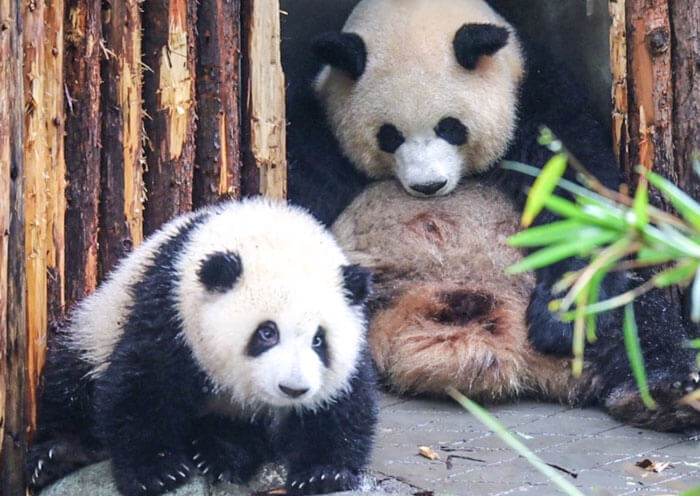
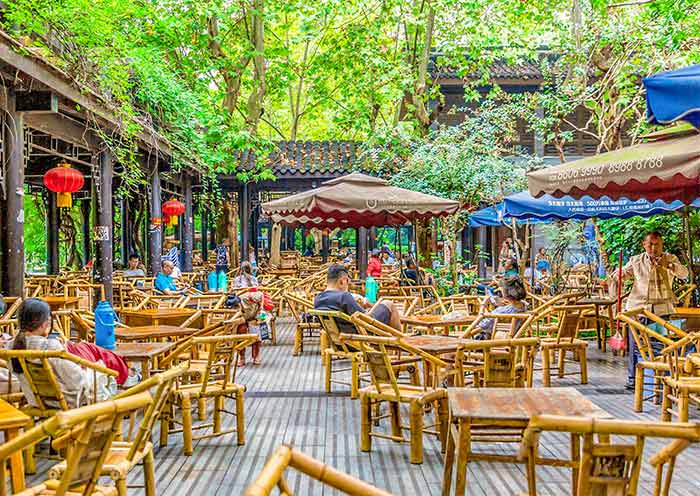
In the morning, you will meet your guide early at the appointed time in your hotel lobby. Since pandas prefer cool weather and are more active in the morning, we advise you to arrive early at Chengdu Research Base of Giant Panda Breeding (Chengdu Panda Base), located only about 17 kilometers away from the city center. This is the closest panda base around Chengdu for you fulfill your panda dream.
Chengdu Panda Base is the base with the largest population of captive giant pandas in the world, accommodating over 100 pandas of different ages. You can watch pandas playing, eating, climbing, sleeping, and in autumn, even see the pink newborn giant panda cubs in the Sunshine Nursery House and the Moonlight Nursery House. Discover the charming panda stars at this base, such as Hua Hua, the most adored and celebrated panda who has captured the hearts of the nation, and Zhi Ma, the real-life inspiration behind the panda mascot of the World University Games. Besides giant pandas, the cute red pandas (rarer than giant pandas) at the Red Panda Playgrounds are also the highlight of the Chengdu Panda Base. Nowadays, the panda base has also become an urban birding spot for local birders and kids to search for Red-billed Leiothrix, Black-throated Tit, Chinese Blackbird, Spotted Dove, White-browed Laughingthrush, and more. If you're interested, you can follow your guide to discover more about pandas' secrets through the Chengdu Giant Panda Museum, which is free to enter but requires advance reservation, and closed on Mondays.
Later, pay a visit to Wenshu Monastery, a 1400-year-old temple dedicated to honoring Manjushri Bodhisattva, the Symbol of Wisdom. It is one of the four great temples of the Chan (Zen) school of Buddhism in China. Before entering the temple, take a moment to capture the beauty of the Red Wall. Once inside, stroll leisurely through the temple's beautiful Qing Dynasty-style buildings and marvel at the Heavenly Kings Hall, Three Saints Hall, Grand Buddha Hall, Dharma Hall, and Scripture Library in that order. The temple's buildings, such as the bell tower and corridor, are seamlessly integrated with the main complex, creating a peaceful and immersive atmosphere where you can explore and reflect on the teachings of Buddhism.
In this afternoon, it's time to take a leisurely stroll inside Chengdu Renmin Park (Chengdu People's Park) like a local and enjoy the city's slow lifestyle. You can watch locals square dancing, practicing Taiji, singing Chinese folk songs, playing traditional Chinese musical instruments, as well as playing Chinese chess and boating on the lake. Don’t miss the blind date corner (a marriage market) where parents of unmarried adults flock to the park to find a partner for their daughter or son. Then, order a cup of fragrant jasmine green tea (a favorite of Chengdu locals) while sitting in a time-honored tea house, such as Heming Tea House. Chat with your friends, try Chengdu Ear Cleaning by professional ear cleaner, and see locals having fun playing mahjong.
When the sun sets, the nightlife on Jinli Street becomes even more charming. Known as the "Chengdu Riverside Scene at Qingming Festival Scroll" and ranked at the top of the world's most beautiful streets by CNN Travel in 2021, Jinli Street was first built during the Three Kingdoms Period (220-280) and was then known as "Shu Jinli". Walking on Jinli Street, you can appreciate the brilliant Chinese Traditional buildings of Qing Dynasty style (1616-1911), buy all kinds of souvenirs (Shu embroidery, lacquer products, folk handicrafts, calligraphy, and paintings), try delicious local snacks (Dan Dan Noodles, Egg Pancake, Bon Bon Chicken, Sweet Potato Noodles with Pork Intestines, Iced Jelly, Sour and Spicy Tofu Pudding), and discover intangible heritages like Sugar Painting, Shadow Puppy Play, Sichuan Opera Show...
After the tour, be transferred to your hotel in Chengdu downtown for a good rest.
Recommended Optional Evening Activities:
- Watch a wonderful Sichuan Opera performance which includes face changing, spitting fire, hand shadows, puppet show, dancing, singing and acrobatics. (usually from 20:00 to 21:30).
- Appreciate the city’s night view by boat (30mins) along the Jinjiang River, which winds through central Chengdu. ( 18:00~23:30)
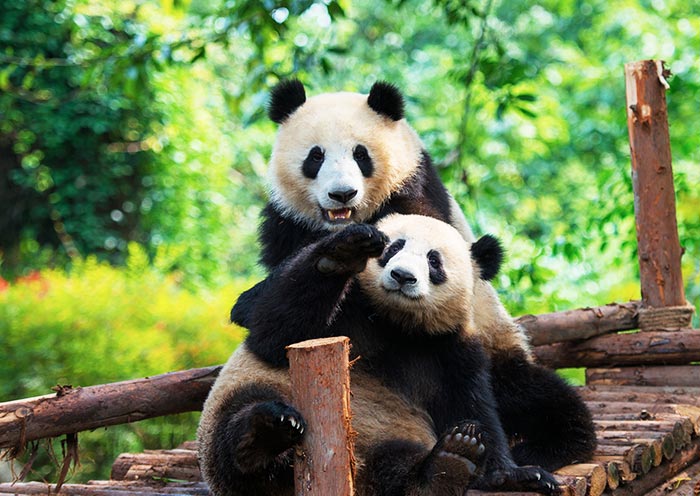
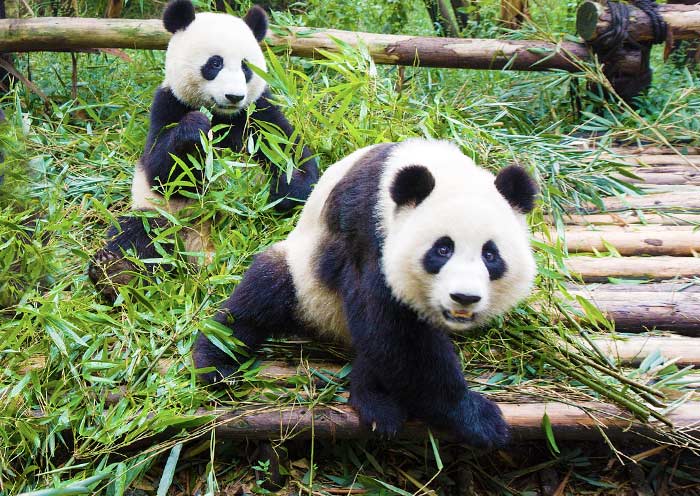
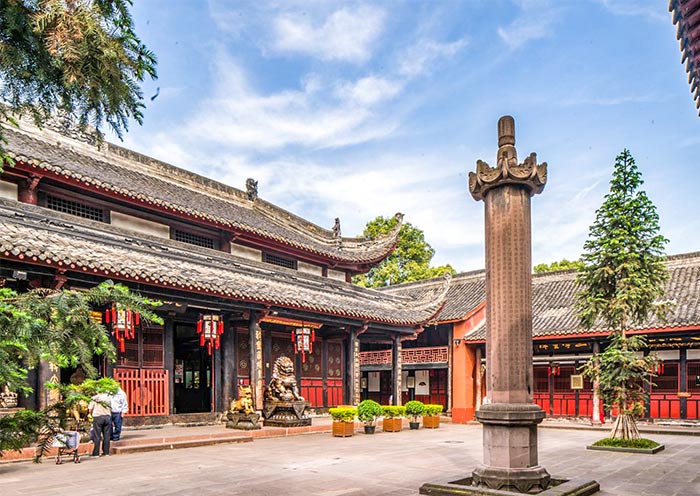
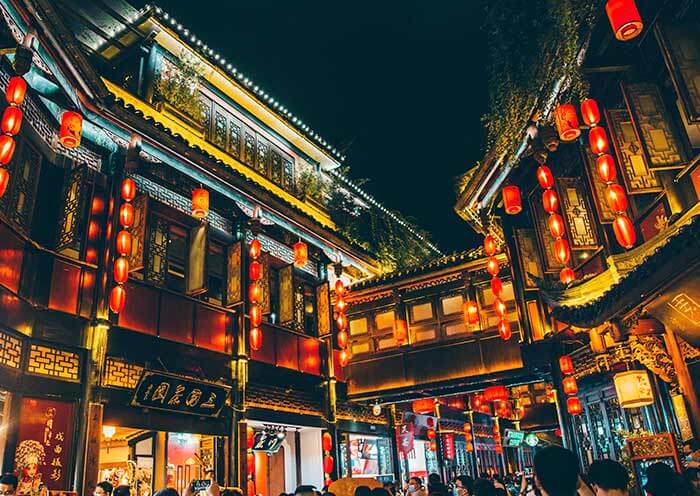
After breakfast, you will be driven about 2 hours to Leshan and visit the UNESCO World Heritage Site - Leshan Giant Buddha which is the largest and tallest stone-carved statue of Buddha in the world. Standing at the confluence of two rivers, the extraordinary, monumental 1200-year-old Buddha image at Le Shan is carved directly into the rock face. The monument stands 71m (233ft) tall and 28m (92ft) wide making it the largest ancient Buddha in the world. His shoulders span 28m, and each of his big toes is 8.5m long. His ears are 7m. He is indeed grand. There is a local saying: "The mountain is a Buddha and the Buddha is a mountain".
You will walk down and up and watch the Buddha from a very close distance. It allows you to see each part of Leshan Giant Buddha closely and presents you with a surprising experience with many ancient Buddhist temples, sculptures, caves and religious relics on the way up to mountain top near the head of the Buddha. (Recommended Optional Activity: The plank pathways are steep and narrow. If it is not convenient for you to walk, you can take a cruise (Leshan Buddha Boat Trip) to get a panoramic view and fully appreciate this Buddha’s magnitude on the river.)After the tour, drive back to Chengdu and have a good rest.
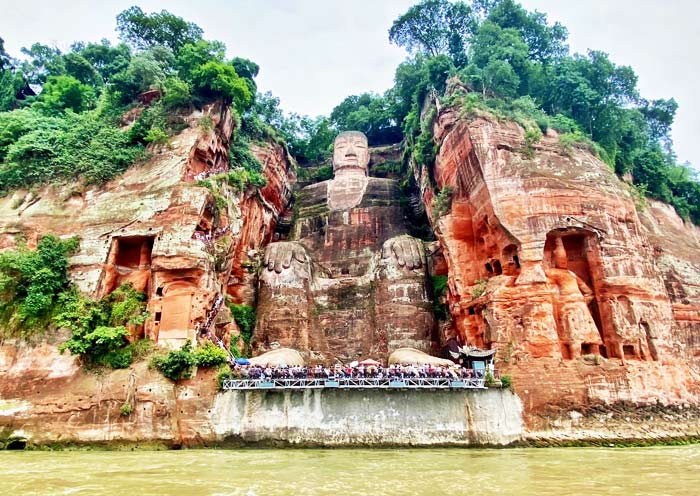
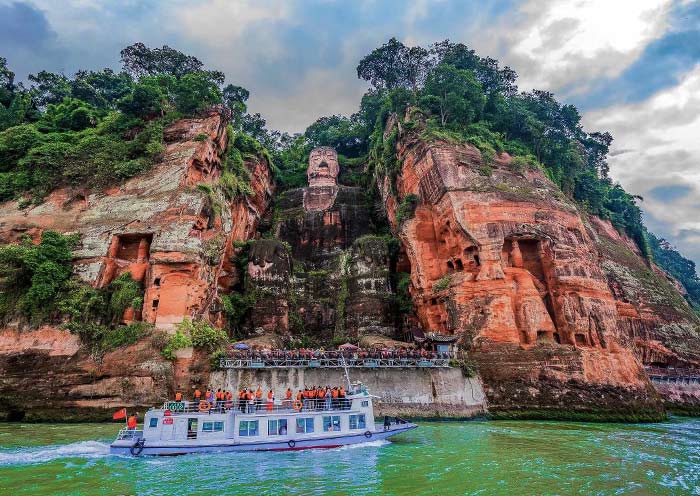
This morning you can explore Chengdu freely. Then your guide will meet you at your hotel lobby and you will be escorted to airport for your flight to Lhasa (about 2.5 hours).
Tashi Delek! Welcome to Lhasa, the capital of the Tibet Autonomous Region! Upon your arrival at the airport in Lhasa, the tour guide and driver will meet you at the exit, and then escort you to the hotel in downtown Lhasa. You can have a good rest to get used to the altitude (3,650m) in your hotel and get ready to explore Lhasa with your guide the next day.
Kind Reminds:
It is good to avoid the highland sickness by slow down, keep warm, drink some water frequently, no shower for the first one or two days, take it easy, and sleep well.
You should always follow your doctor’s advice on altitude according to your health condition.
Be sure to let your guide or the hotel staff know whenever you feel unwell or need help. The people there are always willing to help and good at dealing with altitude sickness.
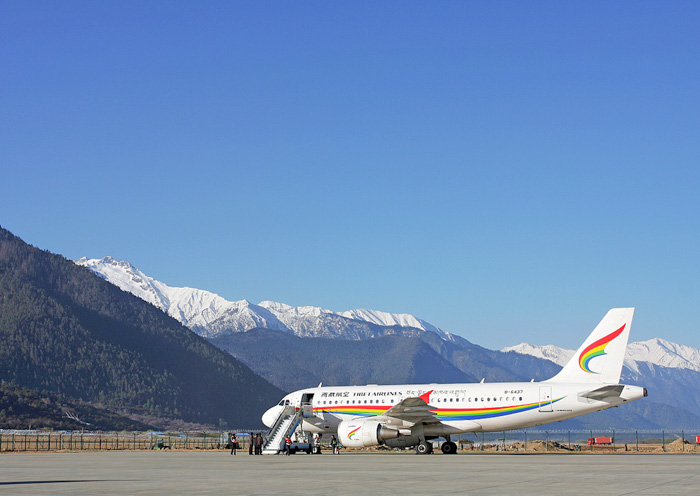
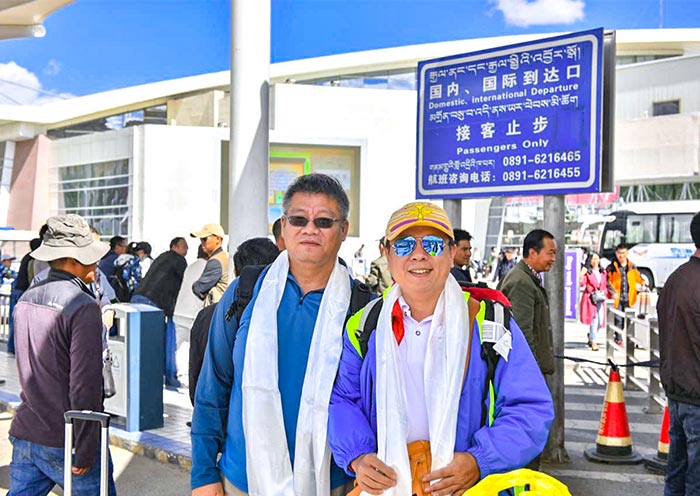
Today, have fun in the Lhasa Traditional Handicraft Art Center for a close touch of Tibetan culture, and you will experience Tibetan Buddhism by witnessing the Monks' Debating in Sera Monastery.
In the morning, enjoy the experience in the Lhasa Traditional Handicraft Art Center, fully immerse yourself by making Tibetan incense, Tibetan calligraphy, and the secrets of block printing. Tibetan incense is typically burned as an offering during religious ceremonies and rituals in Tibetan Buddhism. The ingredients used for Tibetan incense usually include juniper, sandalwood, cedarwood, cinnamon, cloves, and various medicinal herbs. Besides learning how to make Tibetan incense, you can also participate in writing your own name in the Tibetan Language with the help of a local teacher, and engraving and printing it out. Handmade Tibetan incense and printed text can be taken home as a souvenir of the Tibetan cultural experience. This evening, you will enjoy dinner with the group, featuring Tibetan cuisine.
In the afternoon, drive approximately 7km (about 20 minutes) to visit Sera Monastery, which is one of the three great Gelug university monasteries of Tibet. It offers the opportunity to experience Tibetan Buddhism up close. The highlight of Sera Monastery is watching the monks' debate, which takes place around 15:00-17:00 (except on Sundays). The debate is an interesting form of exchange, where one monk acts as the questioner, standing while the answerer or group of answerers sit. The standing monk asks questions and slaps his palms and stomps, each action having a special meaning, such as activating wisdom, and are not meant to be aggressive. You will also have the chance to attend prayer ceremonies, visit meditation halls, and learn about the monastic way of life. It is a must-visit destination to gain insight into the beliefs and practices of Tibetan Buddhism.
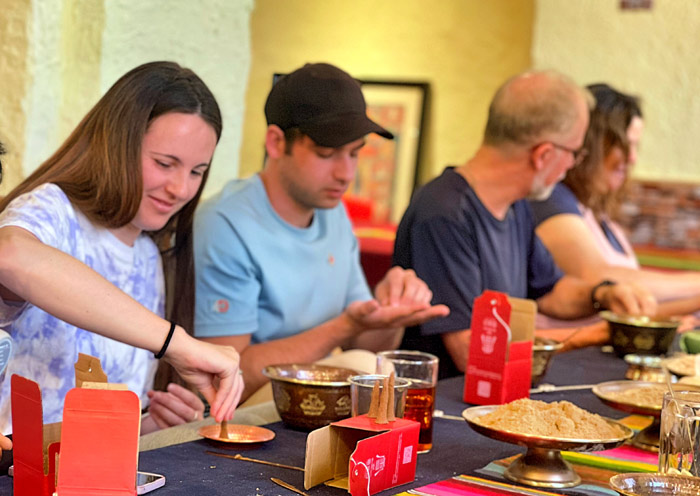
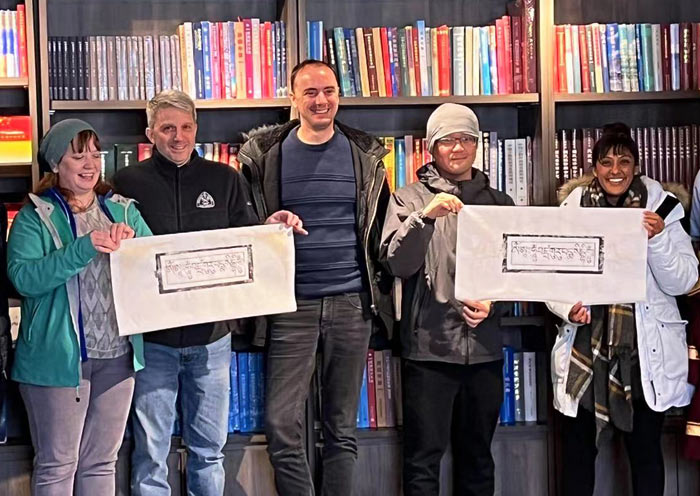
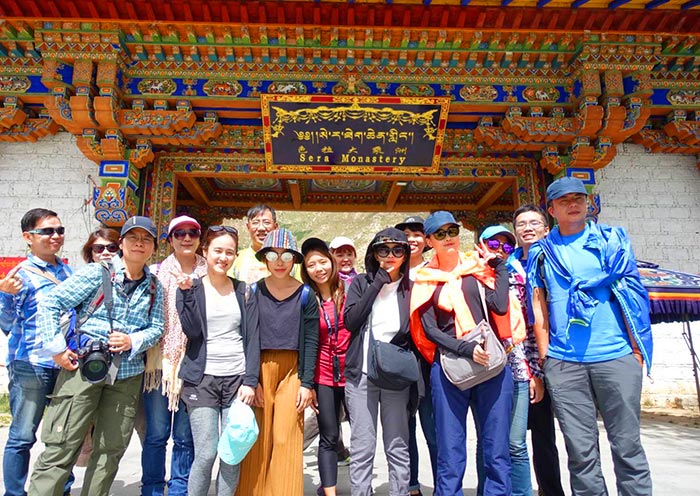
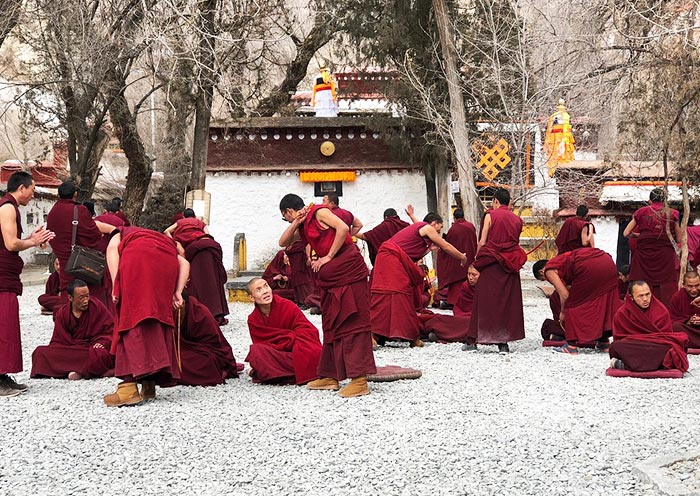
Today, it is the time to explore Lhasa by visiting the world-famous Potala Palace, a World Heritage site and the picture behind the 50 RMB. And then, you will explore Lhasa by visiting Jokhang Temple, a world cultural heritage site renowned for its brilliant architecture, culture, art, and history. Finally, you can stroll through the famous Barkhor Street with locals and learn more about the daily kora life of Tibetans.
In the morning, you can walk up to the Potala Palace to explore. Not only is it the landmark of Tibet, but it is also the traditional residence and winter palace of the Dalai Lama (1649-1959). After climbing 365 steps from the gate of the Potala Palace to reach the Red Palace, you will arrive at the highest palace in the world at an altitude of 3,700m, where you can enjoy an excellent panoramic view of Lhasa city. As you explore the principal halls, chapels, and shrines of past Dalai Lamas in the Red Palace, you will be amazed and moved by its remarkable paintings, gorgeous jeweled works, skilled carving, colorful ornamentation, and the mystery stories behind the treasures. Inside the Potala Palace, you will meet many Tibetan pilgrims who come from afar to pray at this sacred site, making it a lifetime destination for them. You can also ask your guide to provide more stories about Songtsen Gampo, the 33rd king of Tibet, who first built the Potala Palace in the 7th century for his marriage to Princess Wencheng of the Tang Dynasty. (Please note that the visit order may be adjusted based on the visiting time specified on your Potala Palace ticket. All visitors are required to visit the palace with a tour group and remain inside for one hour. Please be advised that photography is prohibited inside the palace.)
Located in the heart of Lhasa for over 1300 years, the Jokhang Temple is an important pilgrimage site for Buddhists from all over the world. Famed as the spiritual center of Tibet, it is said that the Jokhang Monastery was built for King Songtsen Gampo's two brides: Chinese Princess Wencheng and Nepalese Princess Bhrikuti. "Jokhang" means "House of Buddha", and it houses a life-size statue of the 12-year-old Sakyamuni, which is considered a treasure of the Buddhist world. This is why Buddhist pilgrims consider it the holiest destination. The Jakhong temple is also renowned for its beautiful architecture. You can admire the intricate carvings, colorful murals, ornate decorations, and details of the building, which is a masterpiece of Tibetan architecture. Time seems to stand still as you watch people pray in front of the temple during the day and night. (Please note that the visit order may be adjusted based on the reservation of your Jokhang Temple Ticket Reservation.)
Afterward, take a walk on busy Barkhor Street near the Jokhang Monastery, which was a place for Buddhists to do a kora (pilgrim circuit) in ancient times. Nowadays, it has become a thriving local market where you can drink a pot of yak butter tea, dress in Tibetan clothes for photos, and pick up some local Tibetan, Nepalese, and Indian handicrafts and souvenirs.
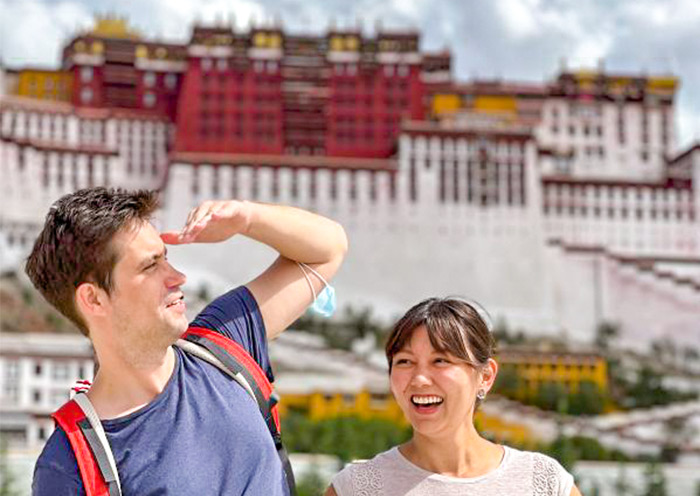
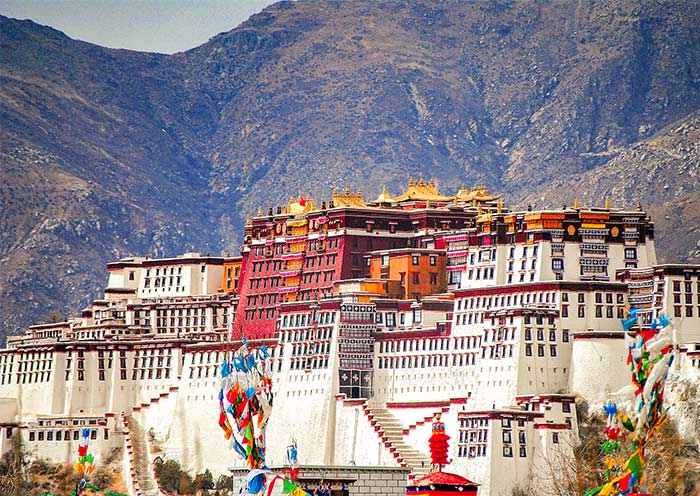
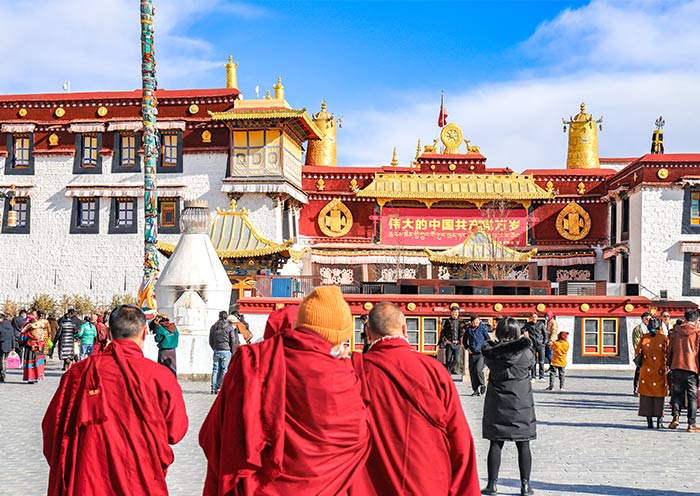
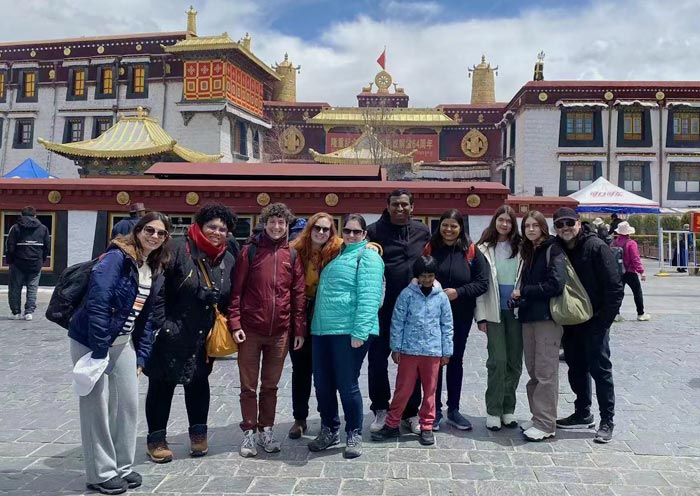
On this day, drive about 8 to 9 hours (340km) from Lhasa to Shigatse, with a visit to two amazing natural landscapes - Yamdrok Lake and Karola Glacier - on the way.
In the morning, after about 3 to 4 hours of driving (200km), make sure to have your camera ready. When you reach Kampala Pass (4,797 meters), you'll have a breathtaking view of Yamdrok Lake, a freshwater lake down below, as well as spectacular views of the holy Mt. Nyenchen Khangsar in the distance. It is one of the four largest sacred lakes in Tibet, along with Lhamo Latso Lake, Manasarovar Lake, and Namtso Lake. Yamdrok Lake offers stunning views of the Tibetan plateau and is said to be able to help Tibetans find the reincarnated soul of the Dalai Lama. Moreover, you may see dressed-up Tibetan mastiffs, dogs, goats, and yaks there. It is optional for you to pay 5-10 yuan to pose with and take photos of them; for local Tibetans, it's a way to earn extra income for their families.
In the afternoon, drive about 1.5 hours (70km) to visit one of the most beautiful glaciers in Tibet - Karola Glacier, the filming location of the movie "Red Valley" (Hong He Gu). As one of Tibet's three major continental glaciers, backed by the southern slope of Naiqin Kangsang Peak (7,191 meters), one of the four highest peaks in Tibet, this white glacier is also the source of the eastern part of the Nianchu River. The Karola Glacier (5,012m) is only 300 meters away from the highway connecting Lhasa to Gyantse town, and you can view it right from your vehicle. You can also easily walk to the foot of the charming glacier, which has a shape like a frozen waterfall right above the road and you. Besides the fantastic hike to the Karola Glacier, on the opposite side of the road, you can appreciate the beautiful snow-capped mountain of Mt Kalurong.
Notes for visiting Karola Glacier:
1. The altitude at the glacier scenic spot is about 5,012m, so be sure to slow down to avoid altitude sickness.
2. The public toilet at the glacier is very basic.
3. Local people may ask you to take photos with them for a fee. Be sure to ask before taking photos to avoid potential issues.
After that, drive about 3.5 hours (170km) to your hotel in Shigatse, the nearest town on the Friendship Highway between Tibet and Nepal. Have a good rest and get ready for a once-in-a-lifetime trip to EBC the next day.
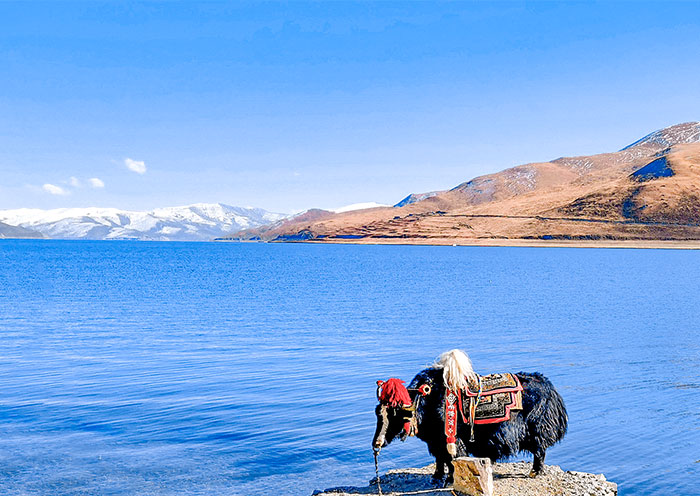
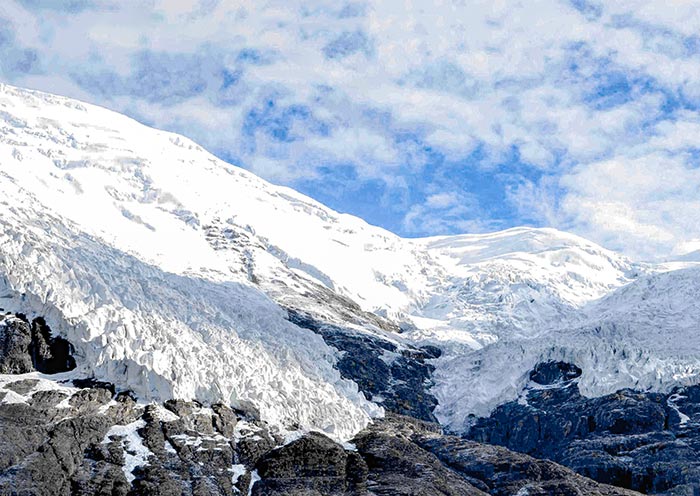
After breakfast, drive about 6.5 hours (330km) to the peak of the world - Mount Everest, while stopping by the Rongbuk Monastery - the world’s highest altitude monastery, before spending the night at the Everest Base Camp (EBC).
Departing from Shigatse, after about 4.5 hours of driving (240km), you’ll get your first glimpse of Mt. Everest from the Gyawu La Pass (5,200m, Gyatso La Pass), between Lhatse and Shelkar. In addition to Mt. Everest, you’ll be amazed by the winding road that seems to go on forever. Along the way, you may see local people biking or hiking all the way to Everest Base Camp. For them reaching the base of the world's highest mountain is a must-do goal or holy belief that is worth the effort.
After enjoying the beautiful and unique scenery on the pass, including incredibly snow-capped mountain ranges, blue skies, floating high clouds, and endless grasslands, it is time to head to Rongbuk Monastery (about 3.5 hours,122km) for the first good view of Mt. Everest. At an altitude of 5,154m, Rongbuk Monastery is the world’s highest monastery, a must-visit for spiritual travelers, and is also photo-worthy. It used to be an area of meditation huts, and you can find hermitage meditation caves with a history of over 400 years, dotting the cliff walls all around the monastery and the valley. Along with brilliant Mt. Everest views, at Rongbuk Monastery, you will be touched by the breathtaking scenery, such as large white chortens, piles of mani stones, colorful prayer flags, devout pilgrims passing by.
Notes:
1.Travelers can only go as far as the Rongbuk Temple area rather than a few kilometers farther as before. But it’s not a big difference in terms of viewing Mt. Everest.
2.Today’s food and lodging is very basic. Due to the high altitude, it is possible that you may experience some symptoms of altitude sickness. We recommend that you stay well hydrated, relax and enjoy the beautiful scenery to minimize your symptoms.
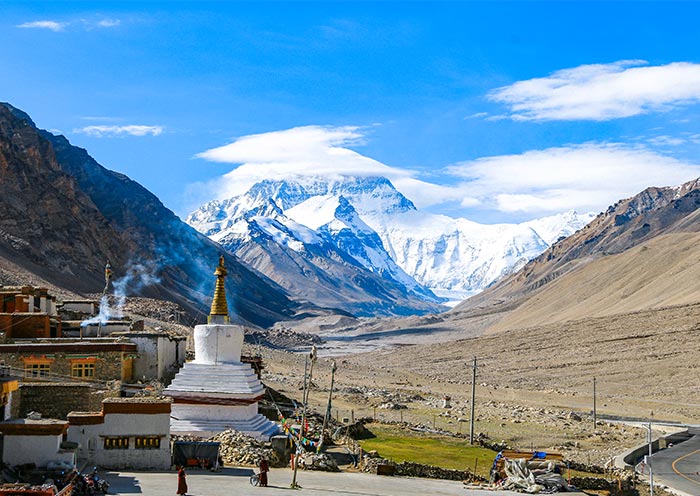

Watching the sunrise over Mt. Everest is a popular activity, you can choose to wake up early in the morning and hike to a nearby vantage point to witness this breathtaking and unforgettable sight.The sunrise over Mt. Everest is not only a beautiful natural phenomenon but also a symbol of human achievement and perseverance.
Then head back to Gyatso La Pass (Gyawu La Pass, the Dingri Boundary, 122km, 3.5 hours) for a quick photo stop. After that, drive back to Shigatse (240km, about 4.5 hours).
After that, drive back to your hotel in Shigatse, take a shower, and prepare for the departure the next day. (Please note that we will arrange for you to take the train or vehicle back to Lhasa from Shigatse, depending on the conditions.)
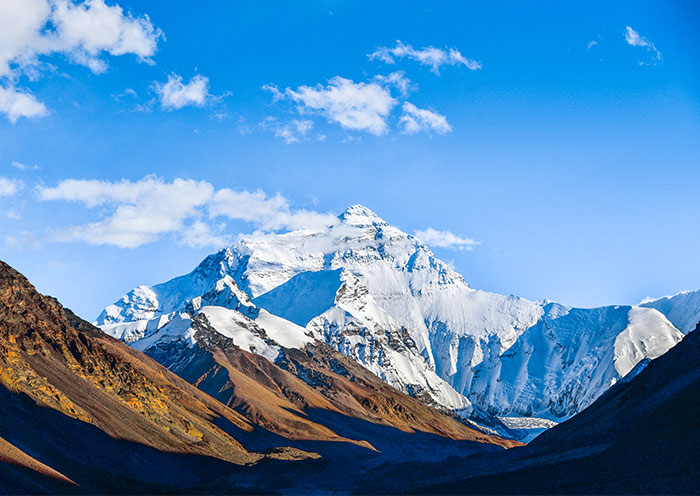
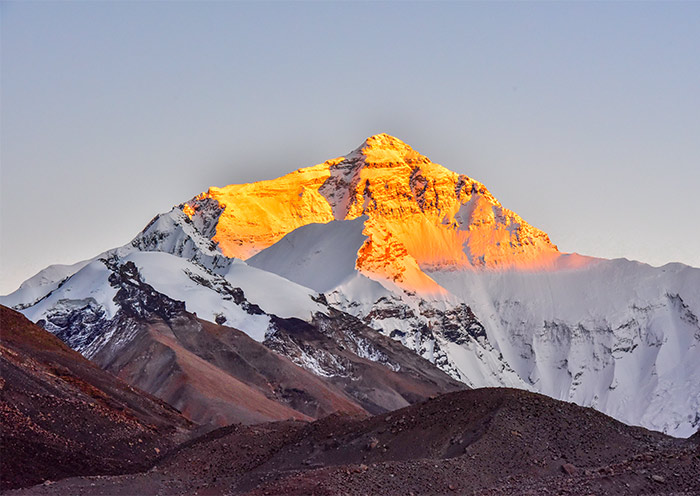
This morning, you will pay a visit to Tashilunpo Monastery. After that, take a train (about 2.5 hours) or take a vehicle (about 8 hours, 340km) back to Lhasa.
Founded by His Holiness the 1st Dalai Lama, Gyalwa Gedun Drup in 1447, Tashilunpo Monastery is the largest monastery in Tsang Area of Tibet. In Tashilunpo Monastery, you can visit the traditional seat of successive Panchen Lamas, Tibet's second-highest incarnation. Pay a visit to the ancient tombs of the fourth and tenth Panchen Lama, as well as the chortens, which hold the bones and remains of the sacred Tibetan lamas. Learn more from your guide about Panchen Lamas and Dalai Lamas while appreciating the brilliant religious painting on Tibetan architecture, listening to the Tibetan Buddhism chanting by local monks, and even participating in the kora like locals. Don’t forget to hike up to the top of the monastery for a stunning bird’s eye view of the monastery itself and Shigatse City.
Afterward, head back to your hotel in downtown Lhasa for a good rest.
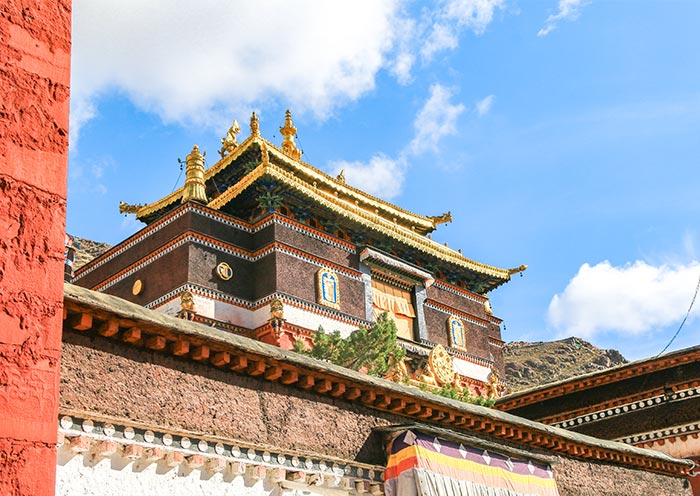
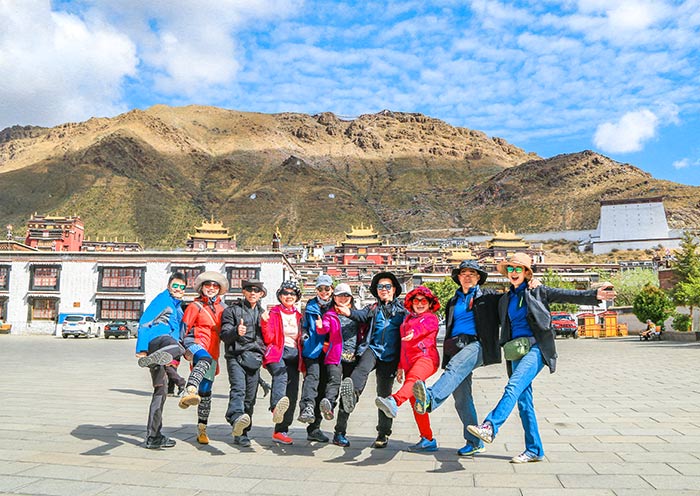
You tour guide will escort you to airport for your flight to Chongqing (about 3 hours).
Welcome to Chongqing, the Mountain City of China! Upon your arrival at the airport, the tour guide and driver will meet you at the exit, and then escort you to the well-selected hotel in Chongqing. The rest of the day is free on your own so you can have a good rest for the jet lag or explore by yourself around your hotel.
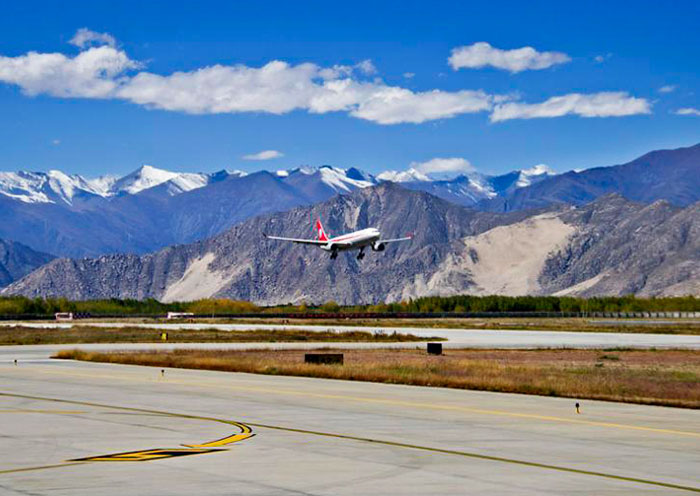
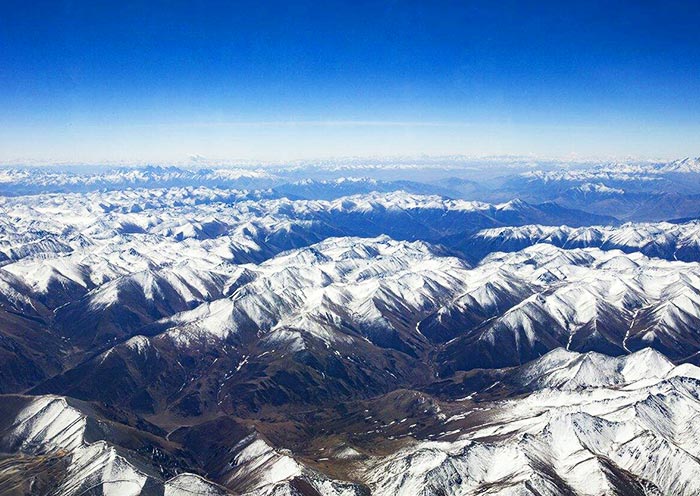
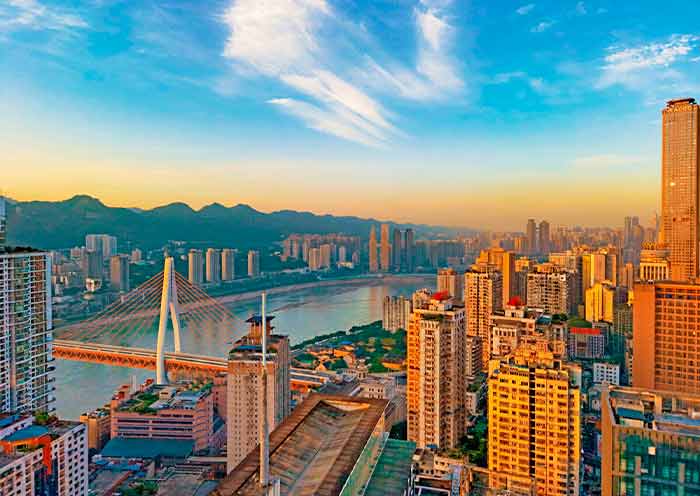
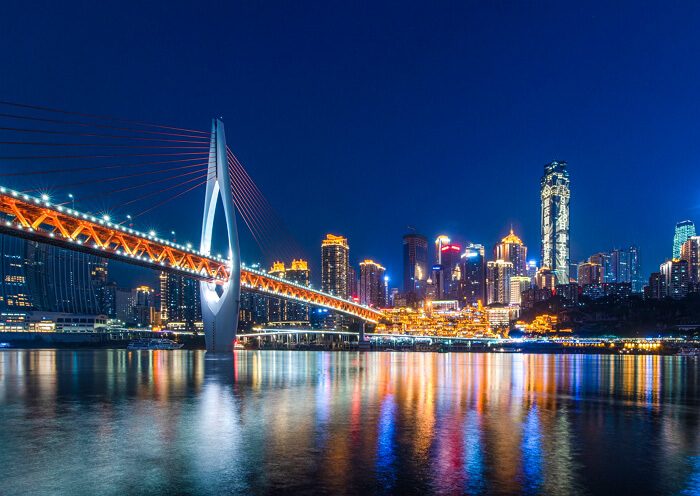
In this morning, start your journey with us at Ciqikou Ancient Town, a living museum of Chongqing’s history! This 1,000-year-old charming town, featuring well-preserved Ming and Qing Dynasty architecture, was once a bustling porcelain trade hub and still brims with cultural heritage. Explore the enchanting streets of Ciqikou, where every step on the narrow cobblestone paths feels like traveling back in time. Immerse yourself in the vibrant atmosphere as you admire traditional crafts, enjoy local performances such as Sichuan opera face-changing shows, and savor delicious street food like the famous Mahua (crispy fried dough twists).
This afternoon, embark on a journey through time at the Three Gorges Museum, home to a vast collection of over 280,000 precious historical relics. Dive deep into the fascinating story of the Yangtze River, the formation of the iconic Three Gorges, and the evolution of Chongqing from its ancient beginnings to its vibrant rise in the 20th century. After exploring the museum, don’t miss the chance to capture stunning photos in front of the People’s Assembly Hall, an architectural masterpiece located just outside the museum.
Later, let’s witness the most thrilling sight - the train that passes through a building at Liziba Metro Station. Located on Line 2 of Chongqing’s monorail, this station is famously constructed through the middle of a residential building, making it a truly unique and unforgettable experience.
After that, you will be transferred to Hongya Cave, located along the Jialing River and near Chaotianmen Square. It is famous for its traditional stilted buildings (Diaojiaolou), dazzling night views, and vibrant atmosphere. Stroll along the riverside promenade to enjoy spectacular views of the Jialing River and the modern Chongqing skyline. Explore the multi-level complex, featuring Diaojiaolou-style wooden structures and steep stairways. Here, you can even try Hot Pot, if you like. As night falls, this complex transforms into a dazzling spectacle, offering one of Chongqing’s most iconic night views.
After the tour, be escorted to your hotel in Chongqing downtown area.
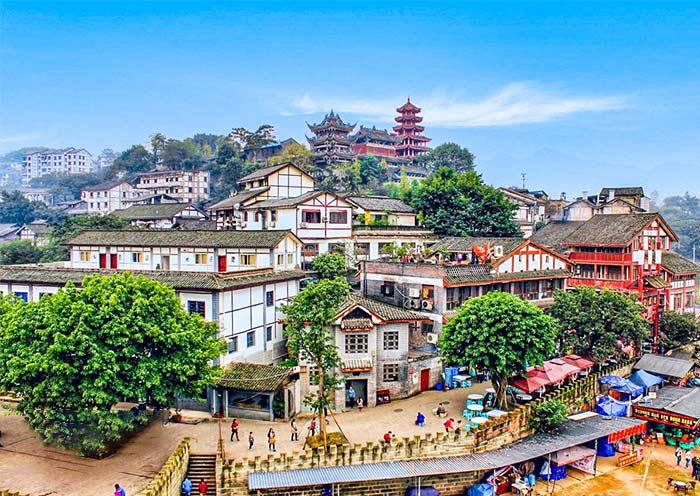
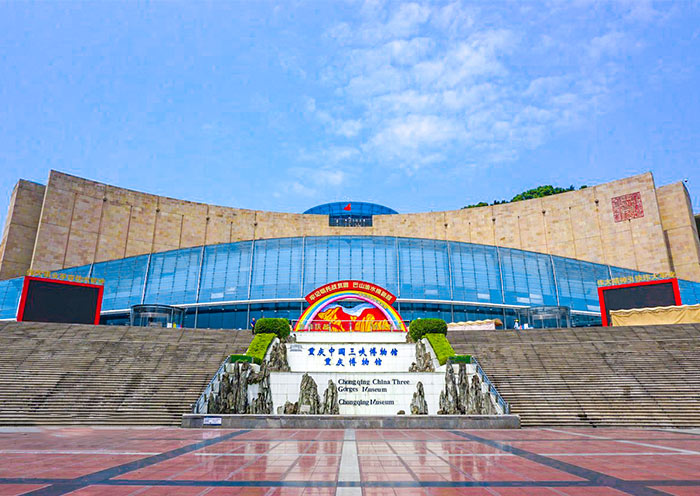
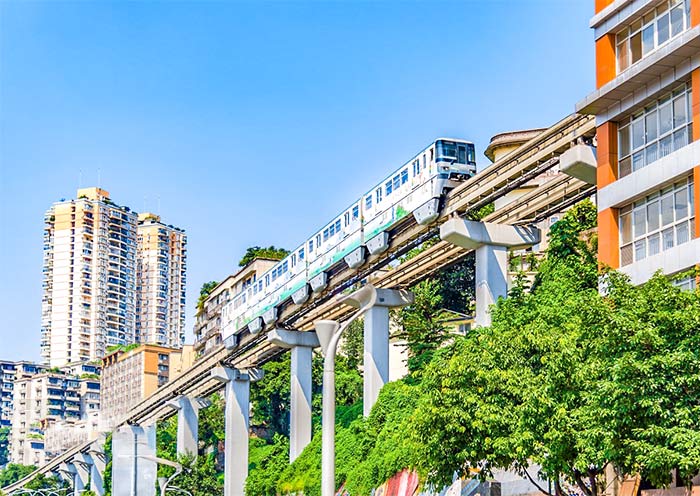
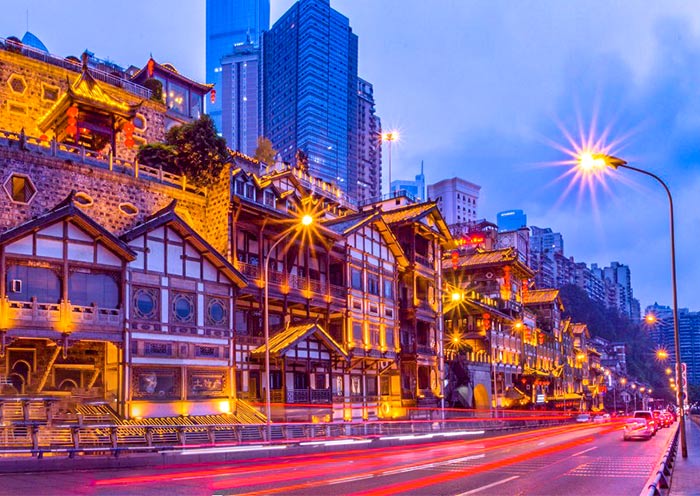
You'll take a high-speed train from Chongqing to Zhangjiajie City (about 2.5 hours), the real-life inspiration for the Hallelujah Mountains from the movie Avatar! Upon arrival, your local guide and driver will greet you at Zhangjiajie West Railway Station and transfer you to your hotel in the Zhangjiajie downtown area (8km drive, within 20 minutes).
Afternoon: Explore Tianmen Mountain
Your guide will take you to explore Tianmen Mountain in Tianmen Mountain National Forest Park. Known as the "Soul of Zhangjiajie" and the "No.1 Sacred Mountain of Western Hunan Province," this scenic area is conveniently located only 8 kilometers from Zhangjiajie city center. It's unique because it's suitable for people of all ages, with no strenuous climbing necessary. You'll ascend via the world's longest cable car, spanning 7,455 meters, which takes you directly to the mountaintop. There's also a smaller cableway available on the mountaintop for further exploration. The only section that requires walking is the Tianmen Cave staircase, but an elevator is also available for your convenience.
First, enjoy the 30-minute cable car ride from Zhangjiajie City to the top of Tianmen Mountain. As you ascend, you'll be treated to panoramic views of the winding mountain road with 99 bends (known as the Road to Heaven) and the breathtaking beauty of the bonsai-like landscapes. Now, brace yourself for a thrilling challenge: step onto the cliff path. Walk along the Glass Walkway, a transparent glass path stretching for 60 meters and hovering 1,430 meters above the bottomless valley, giving you a thrilling sensation of walking in the sky. Additionally, experience the 1.6-kilometer-long Cliff-Hanging Walkway, built along the edges of the mountain's summits – truly an amazing adventure! Next, you have the option to visit Tianmen Temple, a Buddhist structure embodying the architectural style of the Qing Dynasty (1616-1912). Surrounded by lush green forests, it offers a serene atmosphere. You can also visit Yunmenxianding (云梦仙顶; 1,518m), the highest point in Tianmen Mountain National Forest Park, to enjoy a bird's-eye view of the surroundings.
Afterward, take the escalator down from the mountaintop to Tianmen Cave, the world's highest natural mountain-through-cave, spanning 131.5 meters. Tianmen Cave, also known as Heaven's Gate Hole (天门洞), is frequently enveloped in swirling clouds and mist, and at other times, it is illuminated by ethereal rays of sunlight, resulting in a mesmerizing and ever-changing display of light and shadows. Take your time there to capture some beautiful photographs. Following that, you have the option to either walk down the 999 steps or take the elevator. You will then return to a cable car station.
Notes: Walking on the glass skywalk requires a shoe cover fee of 5 yuan per person, and it is an optional expense.
After the tour, drive back to your hotel in Zhangjiajie downtown.
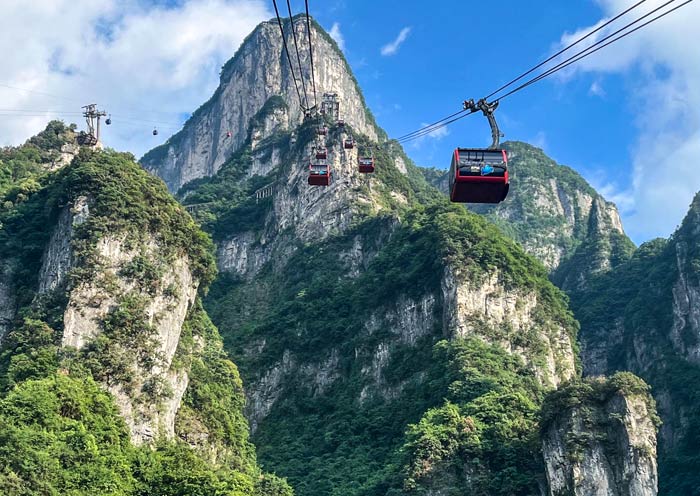
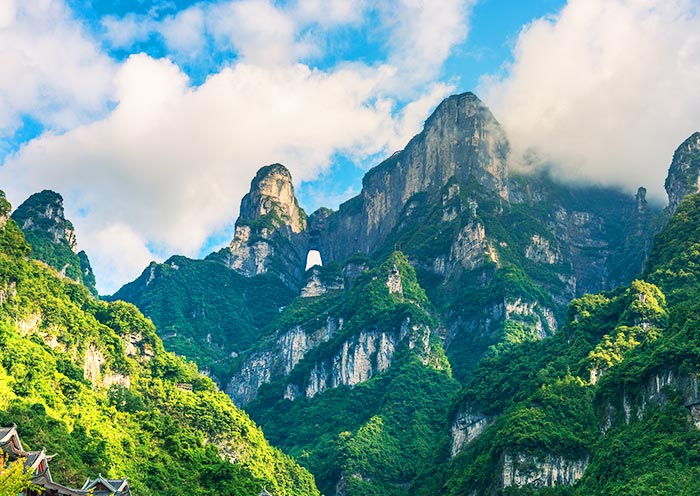
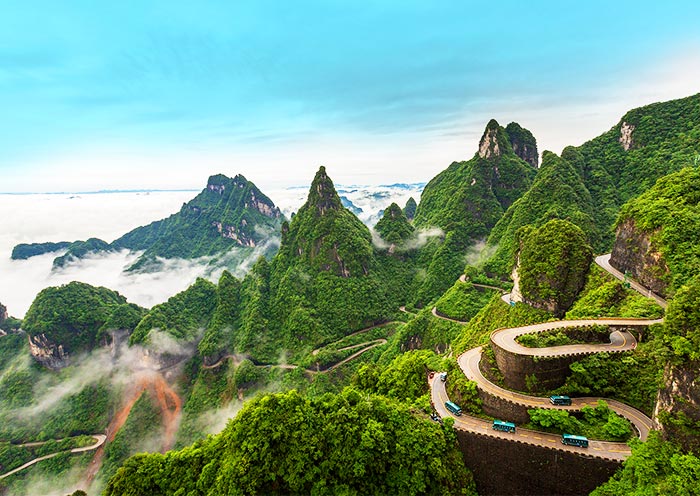
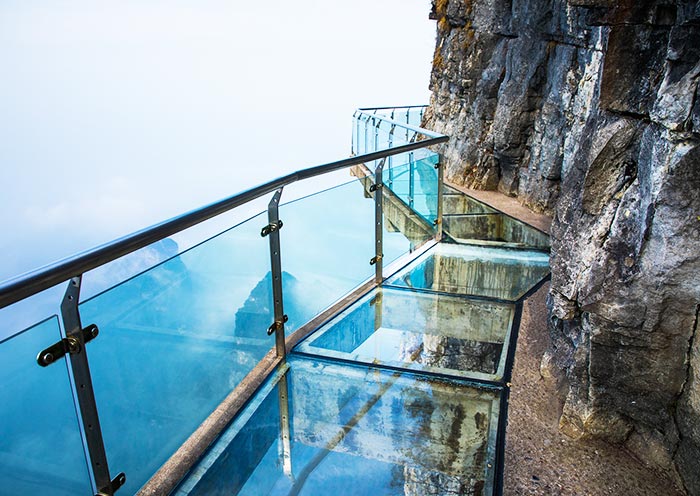
In this morning, start your day with a visit to Zhangjiajie National Forest Park, China’s first national forest park, renowned for its towering sandstone peaks, lush vegetation, and breathtaking landscapes. Take a sightseeing bus to the famous Bailong Elevator, the “World’s No.1 Ladder,” which holds Guinness World Records as the tallest and fastest outdoor sightseeing elevator. In just 66 seconds, ascend 326 meters to the top of the sandstone pillar and step into the magical Yuanjiajie Scenic Area, the real-life inspiration for the floating Hallelujah Mountains in Avatar.
Walk along the Yuanjiajie Scenic Trail, built on the edge of a precipice, and admire landmarks like the South Sky Pillar (Avatar Mountain), the First Bridge Under Heaven, and Lost Soul Platform, while soaking in the extraordinary karst landscape shaped by millions of years of natural forces.
After lunch, continue to the Tianzi Mountain Nature Reserve, known as the "King of Peaks" and famous for its breathtaking sea of clouds, sunrise views, and lush peak forest. Visit scenic spots like Dianjiangtai Platform, where rugged peaks rise from misty canyons, and the Imperial Writing Brush Peaks, a row of towering stone pillars resembling pens. End your tour at the Tianzige Pavilion, offering panoramic views of the majestic peaks, before returning to Zhangjiajie City for an overnight stay.
Note: During peak travel seasons, the itinerary may be adjusted to avoid large crowds.
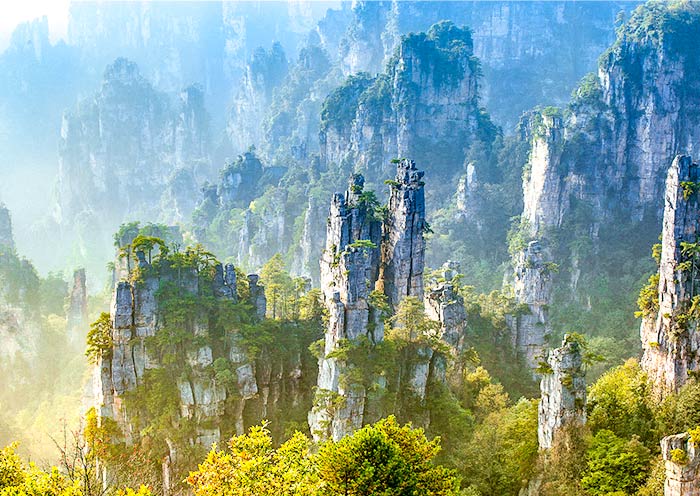
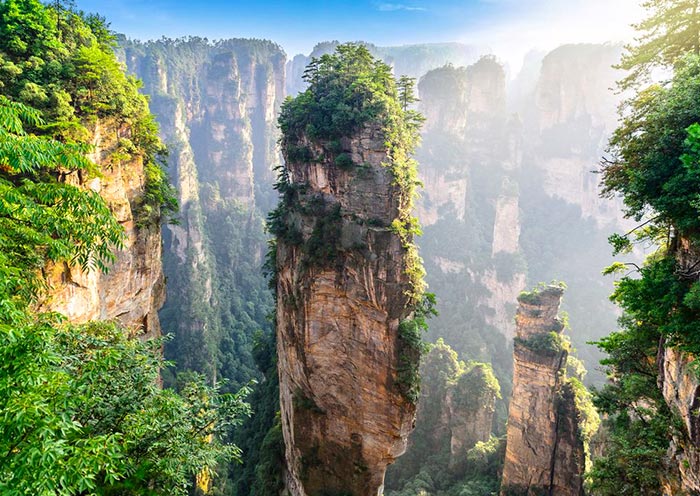
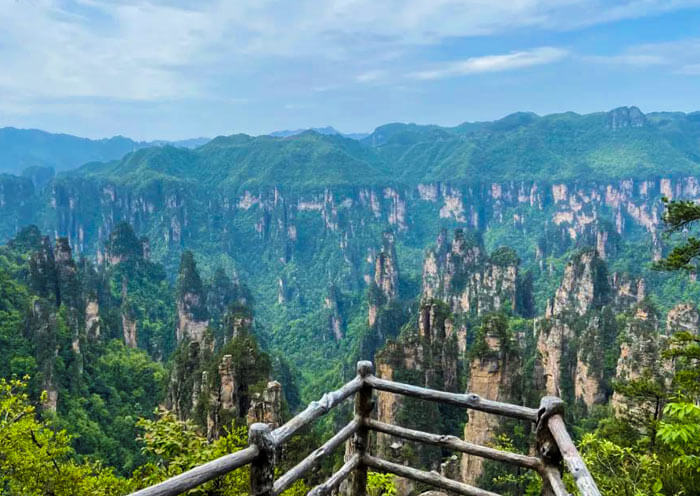
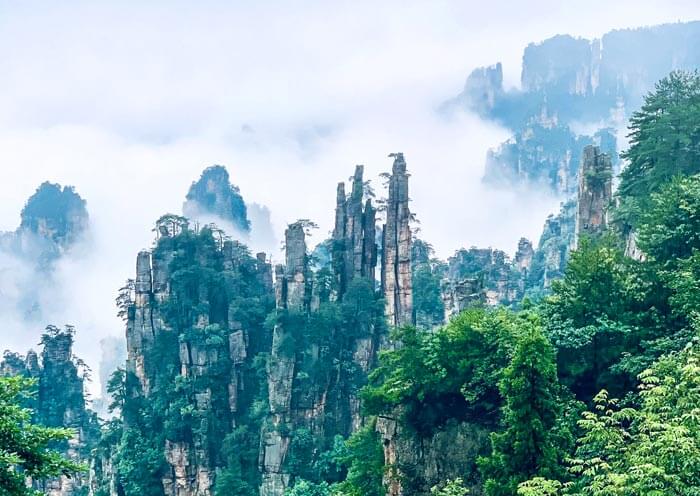
After breakfast, embark on a scenic journey from Wulingyuan to the Zhangjiajie Grand Canyon (approximately 56 km, 1.5 hours by car). Here, you'll experience the world-famous Grand Canyon Glass Bridge, the longest and highest glass-bottomed bridge in the world. Spanning 375 meters and standing 300 meters above the canyon floor, this architectural marvel offers breathtaking views and the thrill of walking on transparent glass. For the adventurous, there's also the option of the world’s highest bungee jump (self-pay).
Later, you’ll explore the breathtaking Grand Canyon, descending through towering cliffs and lush vegetation. Along the way, discover serene waterfalls, streams, and natural pools, perfect for moments of tranquility. Highlights include the stunning Butterfly Waterfall and Rainbow Waterfall, especially vibrant during the rainy season. At the canyon’s base, enjoy an optional boat ride on calm waters, offering a unique view of the majestic cliffs. With gentle paths, the entire valley tour is a leisurely and scenic walk, taking just 1.5 to 2 hours.
Afterward, you’ll be transferred to Zhangjiajie City for an overnight stay.
In downtown Zhangjiajie, you can explore the 72 Strange Buildings, recognized as the Guinness World Record holder for the highest stilted building. Witness the unique stilted houses that showcase the distinctive features of the Tujia ethnic culture. Immerse yourself in Tujia traditions and enjoy a variety of traditional folk performances (held between 18:00 and 22:35), including drum beating, the Tujia waving dance, street martial arts, and the bridal parade.
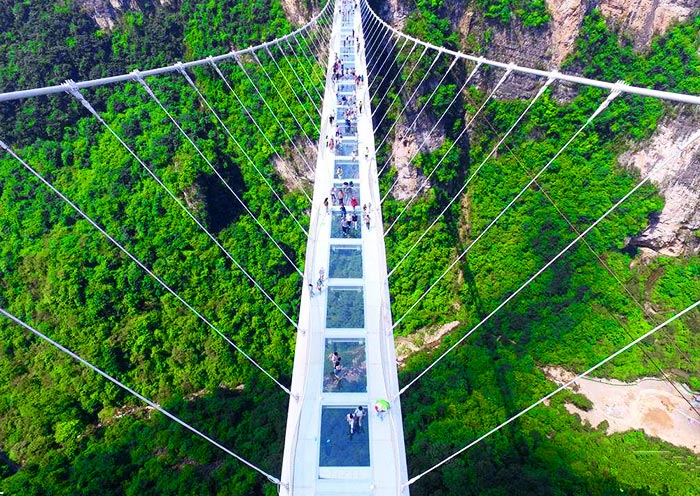
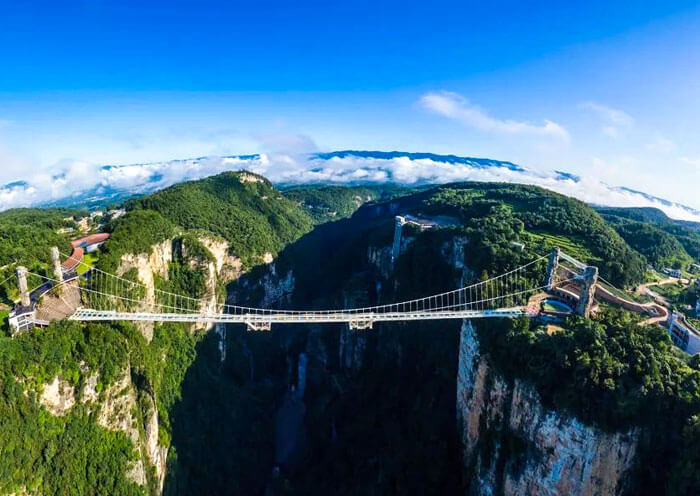
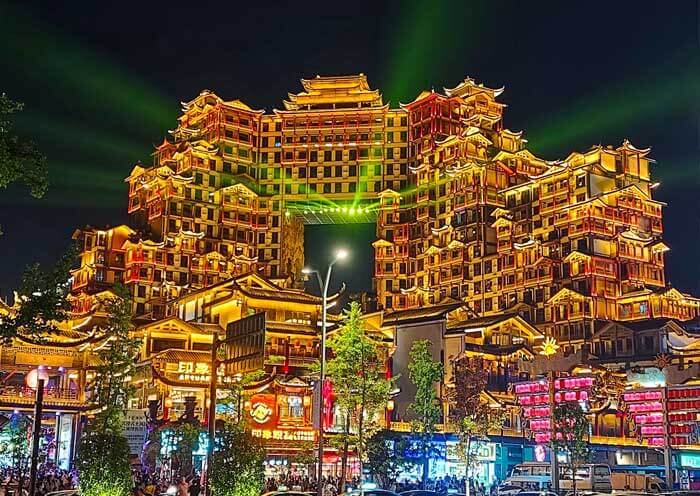
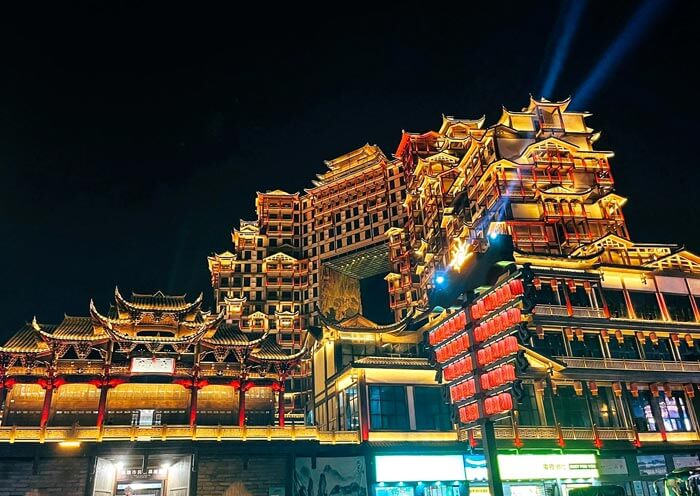
Today, it is time to say goodbye to Zhangjiajie. You will be escorted to the airport for your flight to Xian (about 1.5 hours). Upon your arrival in Xian, the local driver will meet you at the exit of the airport and escort you to your hotel.
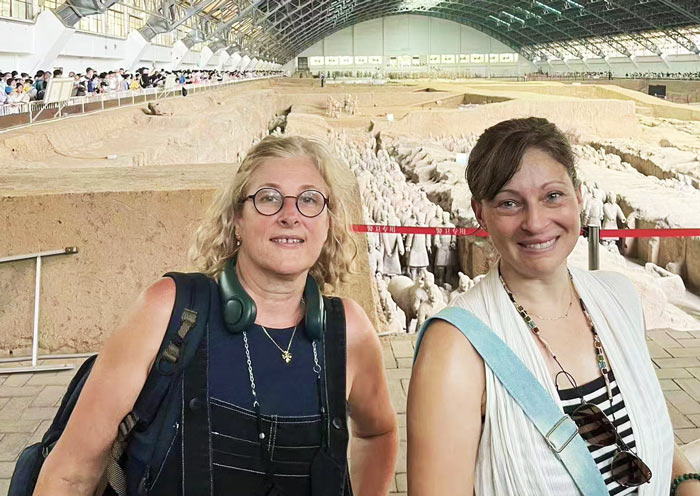
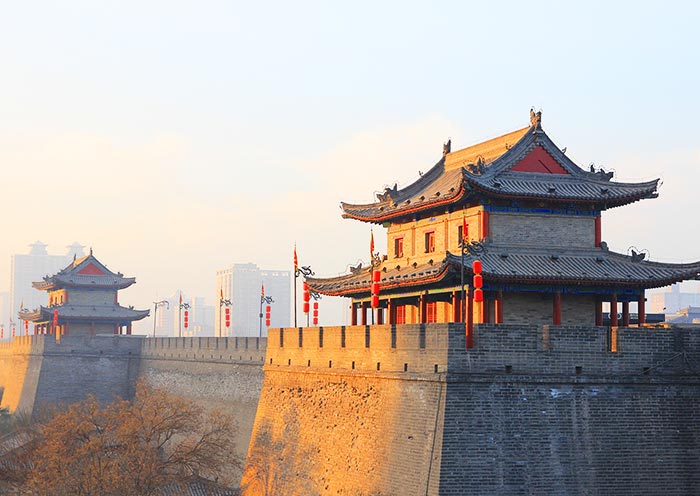
After breakfast, your guide and driver will pick you up at your hotel. Drive about 40km (about 1 hour) to uncover one of the greatest archaeological discoveries in the world - the Terracotta Army Museum, built by the first emperor of China, Qin Shihuang, to protect him in the afterlife. Around 8,000 vivid life-size Terracotta Warriors have been found so far. First, visit the largest and most imposing pit, believed to contain over 6,000 terracotta figures of soldiers and horses. You will be amazed by this subterranean life-size army of thousands standing silently to guard the emperor. Marvel also at the fabulous artistic skills of ancient Chinese artisans. Next, move to another pit where you can see around 1,300 warriors and horses. Examine the ancient army formation, including the kneeling and standing archers, the chariot war array, and numerous troopers holding weapons.
After lunch, head to visit the Ancient City Wall, also known as the Fortification of Xian, representing one of the oldest, largest, and best-preserved Chinese city walls. Spend time leisurely walking the wall and enjoying its inner and outer walls, watchtowers, and moat, taking in panoramic views of modern Xian, there, you will also visit the awe-inspiring Bell Tower (or Drum Tower), a landmark from the Ming Dynasty dating back 600 years, will be beautifully illuminated, creating a captivating backdrop for stunning photos showcasing the harmonious blend of ancient history and modernity in Xian. In the evening, you may also have the chance to visit the lively Bell & Drum Tower Square (Zhongulou Square), allowing you to immerse yourself in Xian's vibrant nightlife like a local.

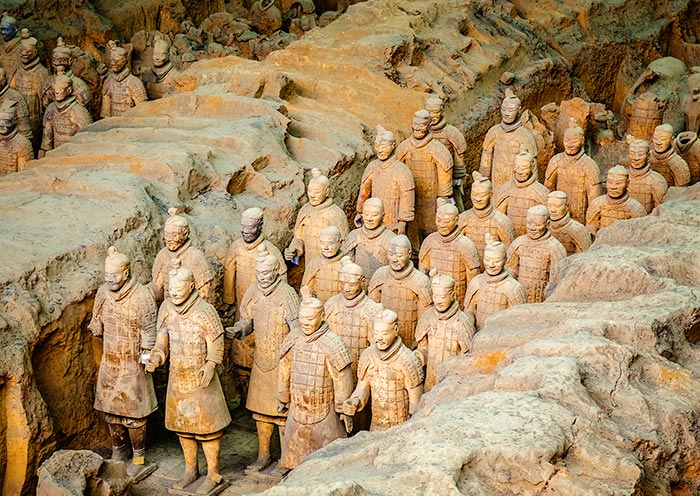
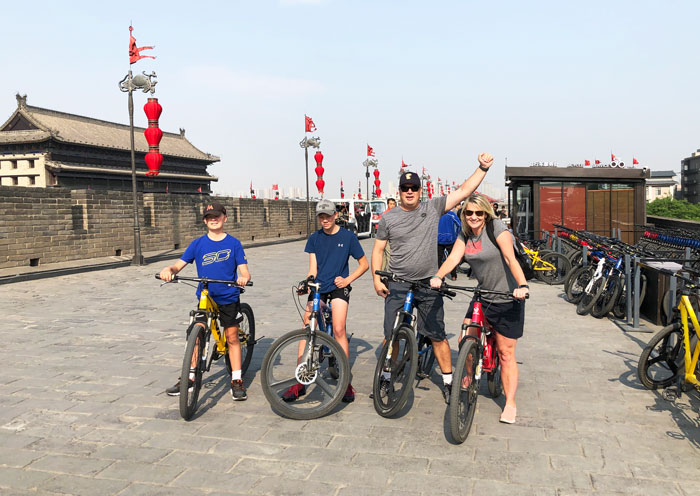
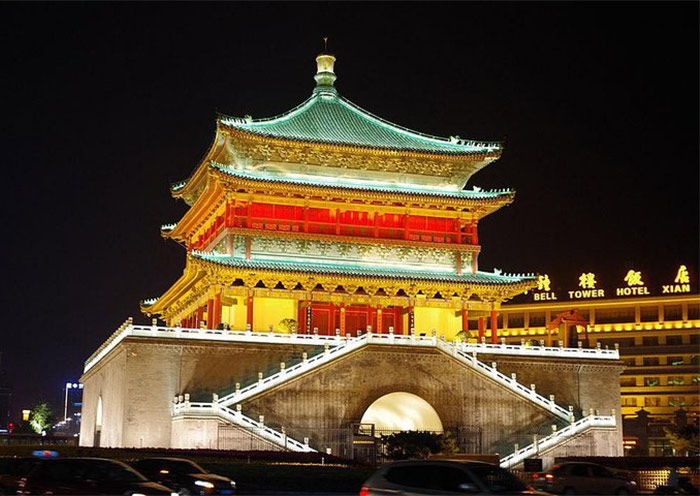
This morning, you will go to visit the Giant Wild Goose Pagoda, one of Xi'an's most recognizable landmarks and symbol of the magnificence of the Tang Dynasty. This seven-story pagoda standing in the tranquil Da Ci'en Temple is one of China's best examples of a Tang-style pagoda (squarish rather than round). It was completed in AD 652 to house Buddhist sutras brought back from India by the monk Xuan Zang. His travels inspired one of the best-known works of Chinese literature, Journey to the West. Later, you will have the opportunity to explore the vibrant and bustling Muslim Quarter (Muslim Street). This historic quarter, situated just behind the Drum Tower about 430 meters west of the Bell Tower in downtown Xian, has been around for over 1,000 years.
After the tour, you will be transferred to the train station for your high speed train to next destination - Beijing. Upon arrival in Beijing, your driver will meet you at the train station and escort you to your hotel. The rest of the day is free on your own so you can explore by yourself around your hotel.
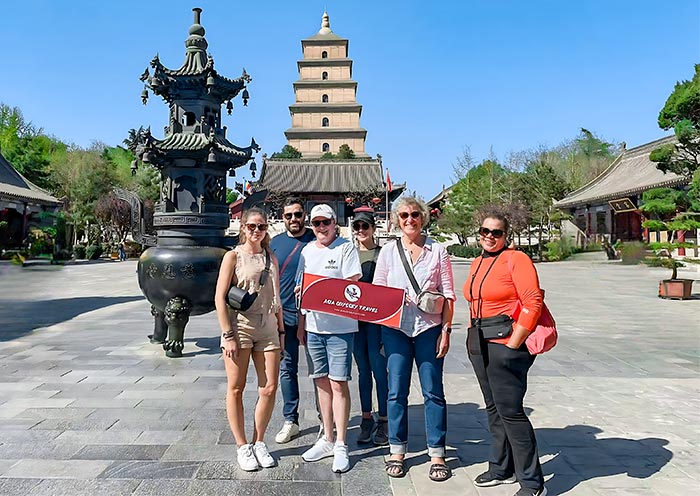
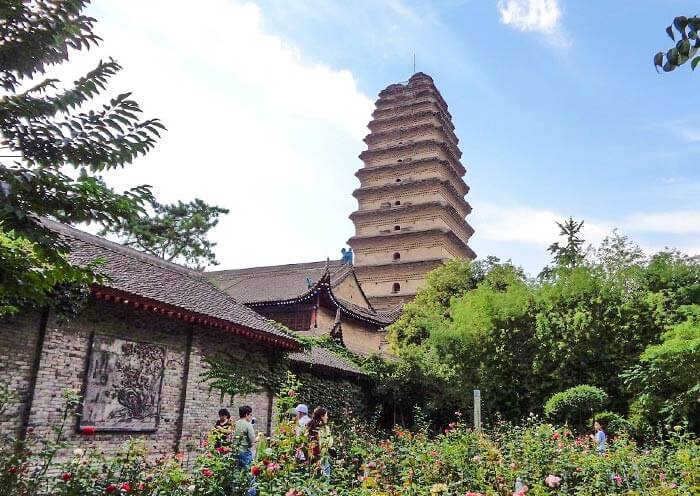
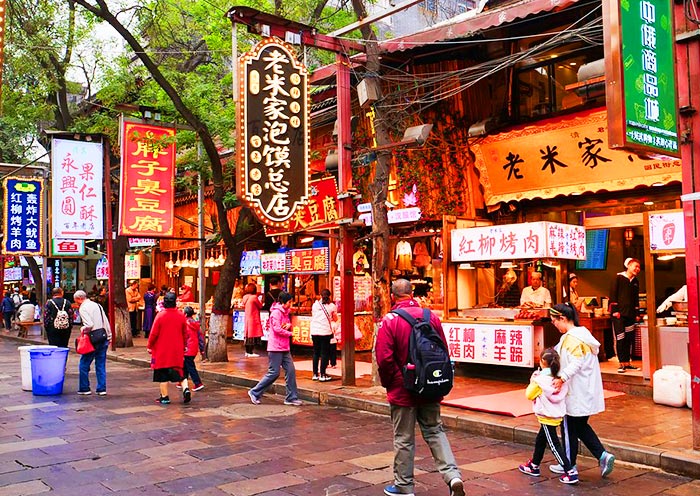
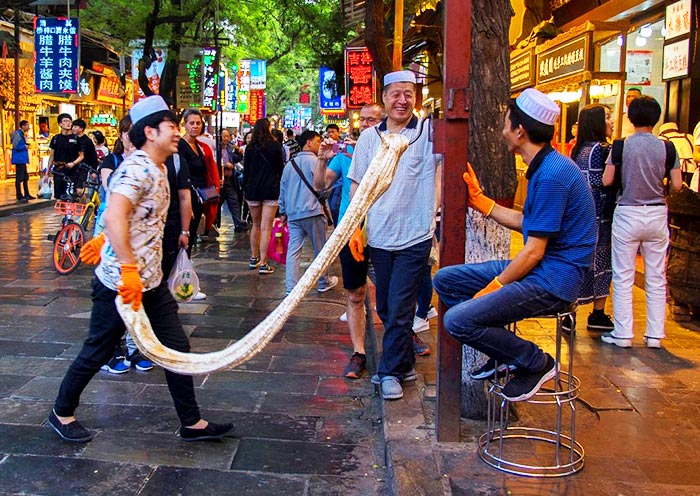
Today you will spend the whole day exploring the ancient citadel of Beijing through China's famous landmarks, imperial grandeur, and royal gardens.
After breakfast, your guide will pick you up at your hotel and head to Tiananmen Square, the world's largest public square and symbol of China. It has witnessed many major events in China's history over the past decades, and from here you can take great photos of Tiananmen Gate, seen daily on CCTV News.
Walking across the square, you will visit the mighty and splendid Forbidden City, the world's largest palace complex and former home of 24 Chinese emperors. Listed as a UNESCO World Heritage site, the Forbidden City has about 500 years of history, serving as the political and ritual center of China during the Ming (1368-1644) and Qing (1644-1911) dynasties. With over 8,700 rooms, it is not only China's largest and best-preserved collection of ancient buildings, but also a city within a city, like the Vatican in Rome. Enter through the Meridian Gate and visit along the central axis to ensure you see all the highlights. Admire the brilliant architecture and numerous ancient treasures while listening to your guide share stories of the emperors who once lived here. Later, take a 15-minute walk up to Jingshan Park, where you can enjoy magnificent panoramic views over modern Beijing and the Forbidden City's russet roofs. (Note: It requires some walking, so please wear comfortable footwear. You can decide whether or not to climb to the top based on your physical condition.)
In the afternoon, drive to the Summer Palace, the "Museum of Royal Gardens," once a summer retreat for royal families. The grounds, temples, gardens, pavilions, lakes, bridges, gate-towers, and corridors are marvels of landscape design. Take a leisurely stroll to appreciate the imperial architecture, hilltop views, and beautiful lakes, which offer a pastoral escape into the landscapes of traditional Chinese painting.
(Travel Note: The Forbidden City in Beijing is closed on Mondays. If your tour falls on that day, the itinerary will be adjusted to ensure you visit the Forbidden City.
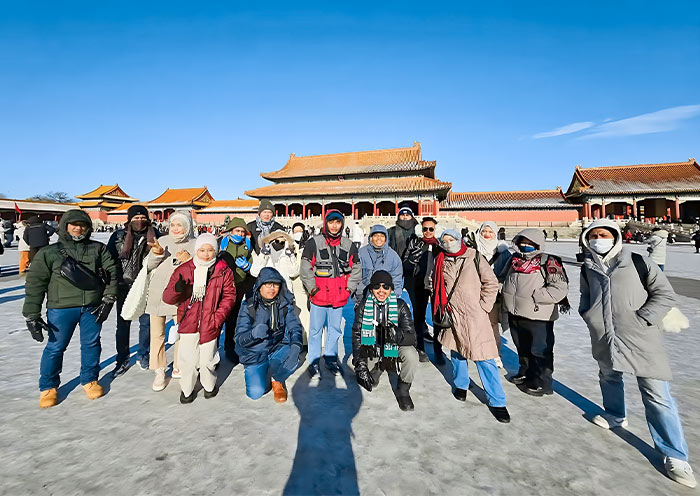
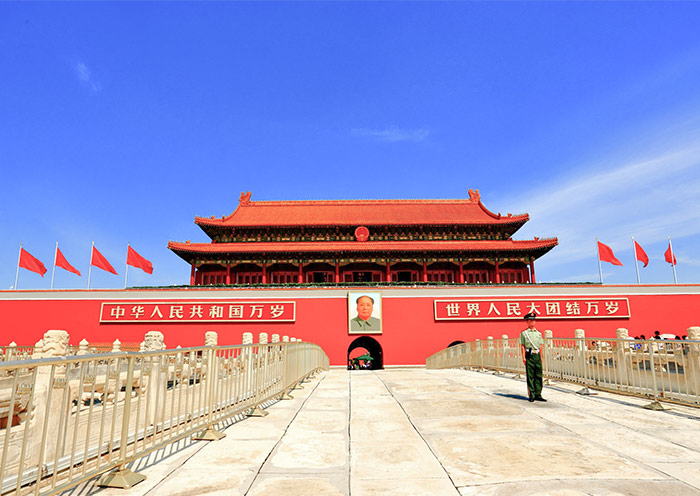
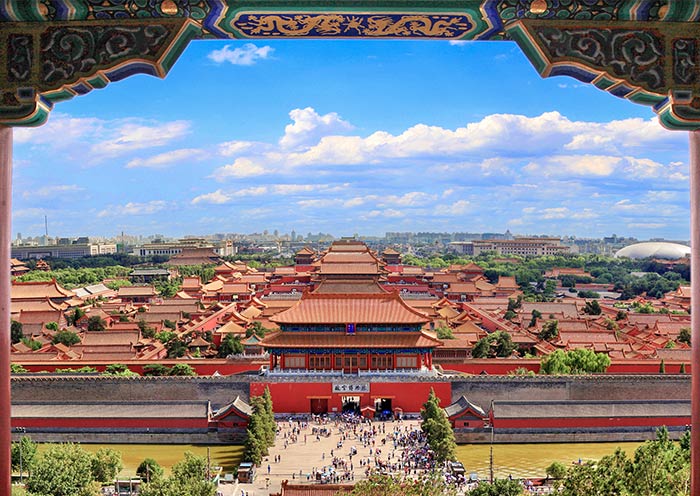
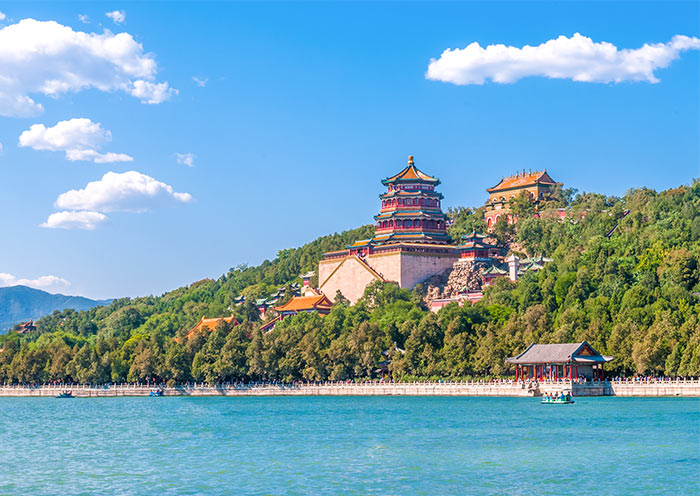
In this morning, you will head northwest of Beijing (about 1.5-2 hours’ drive, 73km) to the Great Wall at Mutianyu. The Great Wall boasts a history over 2,000 years and stretches more than 3,000 miles across several provinces of northern China, making it one of the most impressive ancient masterpieces on the planet. Mutianyu Great Wall is connected with the Jiankou Great Wall in the west and the Gubeikou Great Wall in the east. Mutianyu is the longest and best fully-restored Great Wall with fewer tourists and is also famed for its 23 Ming-era watchtowers and stunning views. Take the cable car up to the 14th watchtower and then enjoy the memorable hiking time on the wall while visiting its western route. With the green pines and cypresses covering the surrounding area, and the winding wall standing majestically on the vast land, you will capture the most stunning natural scenery in this section. Challenge yourselves while climbing up to the 20th watchtower where you could fulfill your Great Wall dream. Cherish the chance and take photos as many as you like!
After the once-in-lifetime experience, head back to downtown Beijing and have the chance to take photos with the exterior of the Bird's Nest (Beijing National Stadium) and Water Cube (Beijing National Aquatics Center). They were both designed for the 2008 Beijing Olympics and used for the 2022 Winter Olympic Games.
After that, transfer back to your hotel and have a good rest tonight.
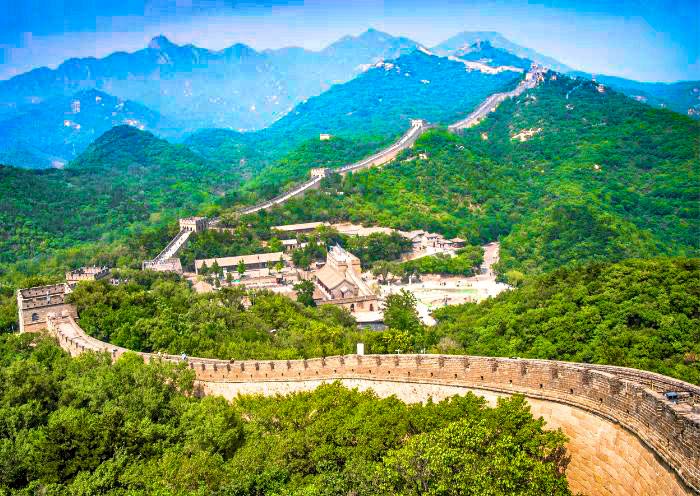
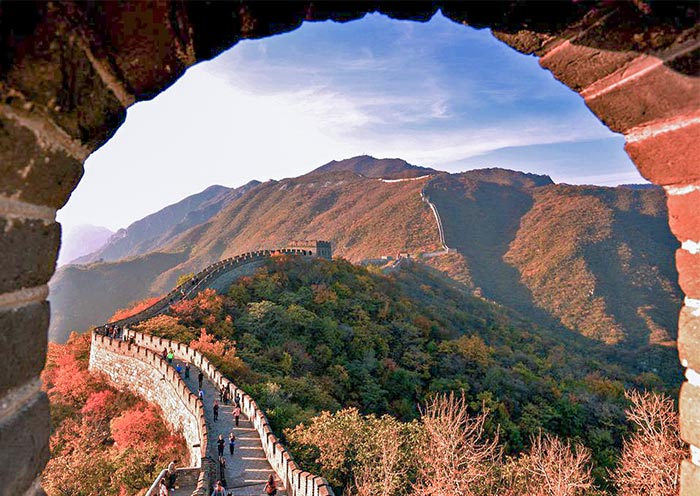
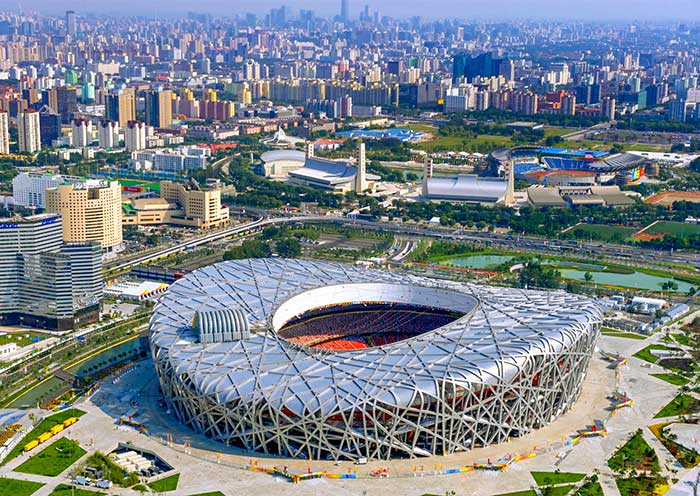
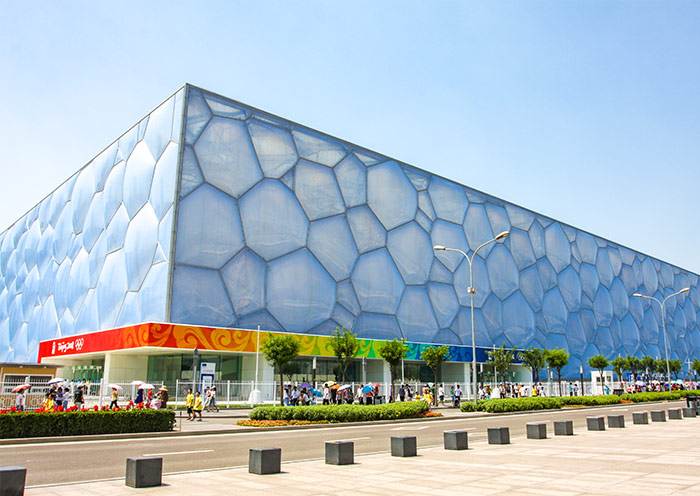
It is time to end your 21-day China Tour from Chengdu. You will have some free time in Beijing and explore more on your own till be escorted to the airport/train station for your flight or high speed train to your next destination!
Thank you for choosing Asia Odyssey Travel for your China tour, and we are always here working for you and hope to see you again for your next trip to China/Asia. Safe journey!
Price: What’s Included & What’s Excluded
What's Included:
What's Excluded:
Hotel Conditions for Your Asia Tour
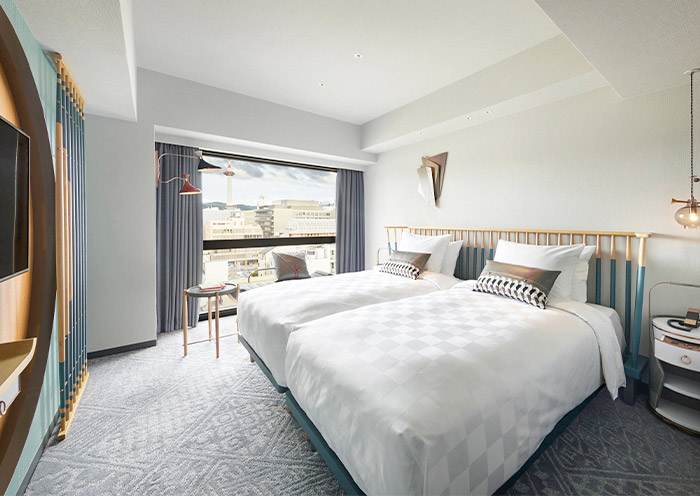

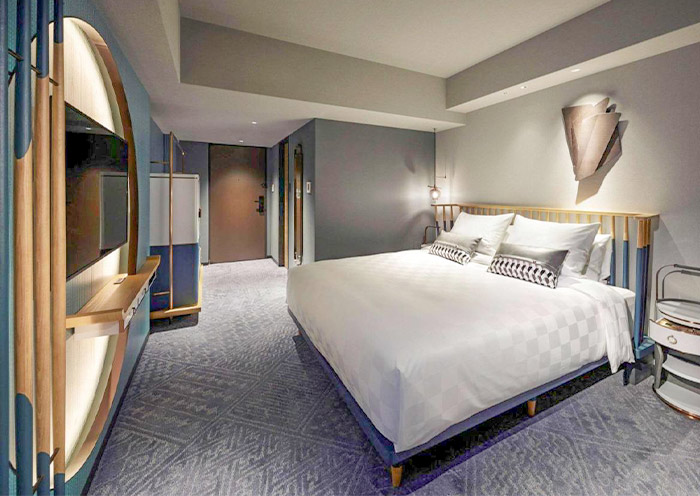
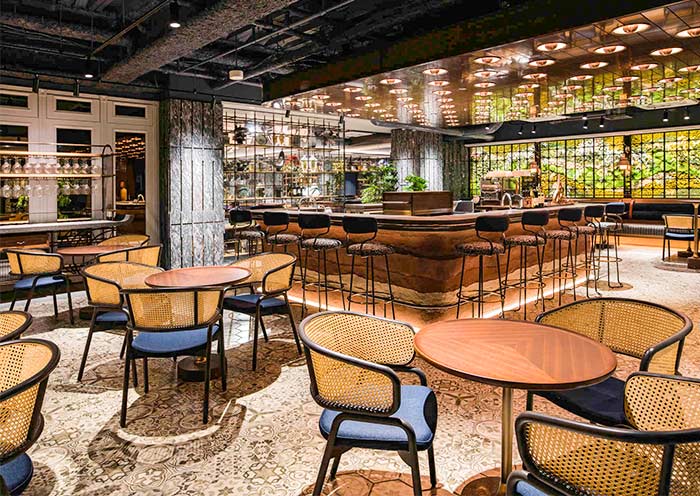
We offer a range of accommodation options to suit various preferences and budgets: luxurious 5-star hotels, comfortable 4-star hotels, and economical 3-star hotels. Our selected hotels are conveniently located close to the city center or popular tourist spots.
If you have specific needs or preferences, please consult with your travel advisor.
Photo Gallery for This Itinerary
Price: request
(Based on a private tour for two people. Price varies depending on program, travel date, number of people.)
Free Enquiry! You don’t need to pay for the reservation.
- United States (+1)
- Australia (+61)
- Singapore (+65)
- Malaysia (+60)
- Philippines (+63)
- Canada (+1)
- Italy (+39)
- Indonesia (+62)
- United Kingdom (+44)
- Spain (+34)
- Mexico (+52)
- Hong Kong (+852)
- Thailand (+66)
- United Arab Emirates (+971)
- New Zealand (+64)
- South Africa (+27)
- Germany (+49)
- Brazil (+55)
- India (+91)
- France (+33)
- Vietnam (+84)
- The Netherlands (+31)
- Saudi Arabia (+966)
- Ireland (+353)
- Argentina (+54)
- Switzerland (+41)
- Romania (+40)
- Pakistan (+92)
- Japan (+81)
- Portugal (+351)
- Bangladesh (+880)
- South Korea (+82)
- Puerto Rico (+1)
- Türkiye (+90)
- China (+86)
- Belgium (+32)
- Qatar (+974)
- Greece (+30)
- Taiwan (+886)
- Austria (+43)
- Poland (+48)
- Israel (+972)
- Chile (+56)
- Sri Lanka (+94)
- Nigeria (+234)
- Peru (+51)
- Colombia (+57)
- Hungary (+36)
- Nepal (+977)
- Denmark (+45)
- Bulgaria (+359)
- Norway (+47)
- Slovenia (+383)
- Sweden (+46)
- Kuwait (+965)
- Costa Rica (+506)
- Ecuador (+593)
- Venezuela (+58)
- Malta (+356)
- Croatia (+385)
- Tunisia (+216)
- Czechia (+420)
- Mongolia (+976)
- Bahrain (+973)
- Mauritius (+230)
- Papua New Guinea (+675)
- Cambodia (+855)
- Dominican Republic (+1)
- Luxembourg (+352)
- Finland (+358)
- Guatemala (+502)
- Myanmar (+95)
- Maldives (+960)
- Slovakia (+421)
- Laos (+856)
- Serbia (+381)
- Brunei (+673)
- Oman (+968)
- Macao (+853)
- Panama (+507)
- Morocco (+212)
- Jordan (+962)
- Georgia (+995)
- Fiji (+679)
- Bolivia (+591)
- Lithuania (+370)
- Bahamas (+1)
- Cyprus (+357)
- Latvia (+371)
- Bhutan (+975)
- Iraq (+964)
- Iran (+98)
- Kenya (+254)
- Jamaica (+1)
- Zimbabwe (+263)
- Azerbaijan (+994)
- Uruguay (+598)
- Estonia (+372)
- Andorra (+376)
- Cameroon (+237)
- Ghana (+233)
- Kazakhstan (+7)
- Nicaragua (+505)
- Egypt (+20)
- Russia (+7)
- Albania (+355)
- Réunion (+262)
- Montenegro (+382)
- Algeria (+213)
- Afghanistan (+93)
- Martinique (+596)
- Uganda (+256)
- Honduras (+504)
- North Macedonia (+389)
- Trinidad and Tobago (+1)
- Suriname (+597)
- Antigua and Barbuda (+1)
- Zambia (+260)
- Ukraine (+380)
- Armenia (+374)
- Barbados (+1)
- Belarus (+375)
- Palestine (+970)
- Lesotho (+266)
- Moldova (+373)
- Ethiopia (+251)
- French Polynesia (+689)
- Gambia (+220)
- Guam (+1)
- Gibraltar (+350)
- Isle of Man (+44)
- New Caledonia (+687)
- El Salvador (+503)
- Comoros (+269)
- Seychelles (+248)
- Chad (+235)
- Samoa (+685)
- Cook Islands (+682)
- Palau (+680)
- Paraguay (+595)
- DR Congo (+243)
- Solomon Islands (+677)
